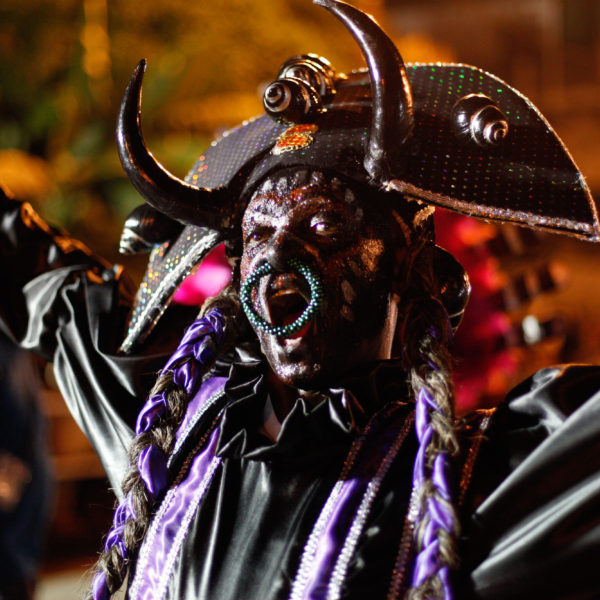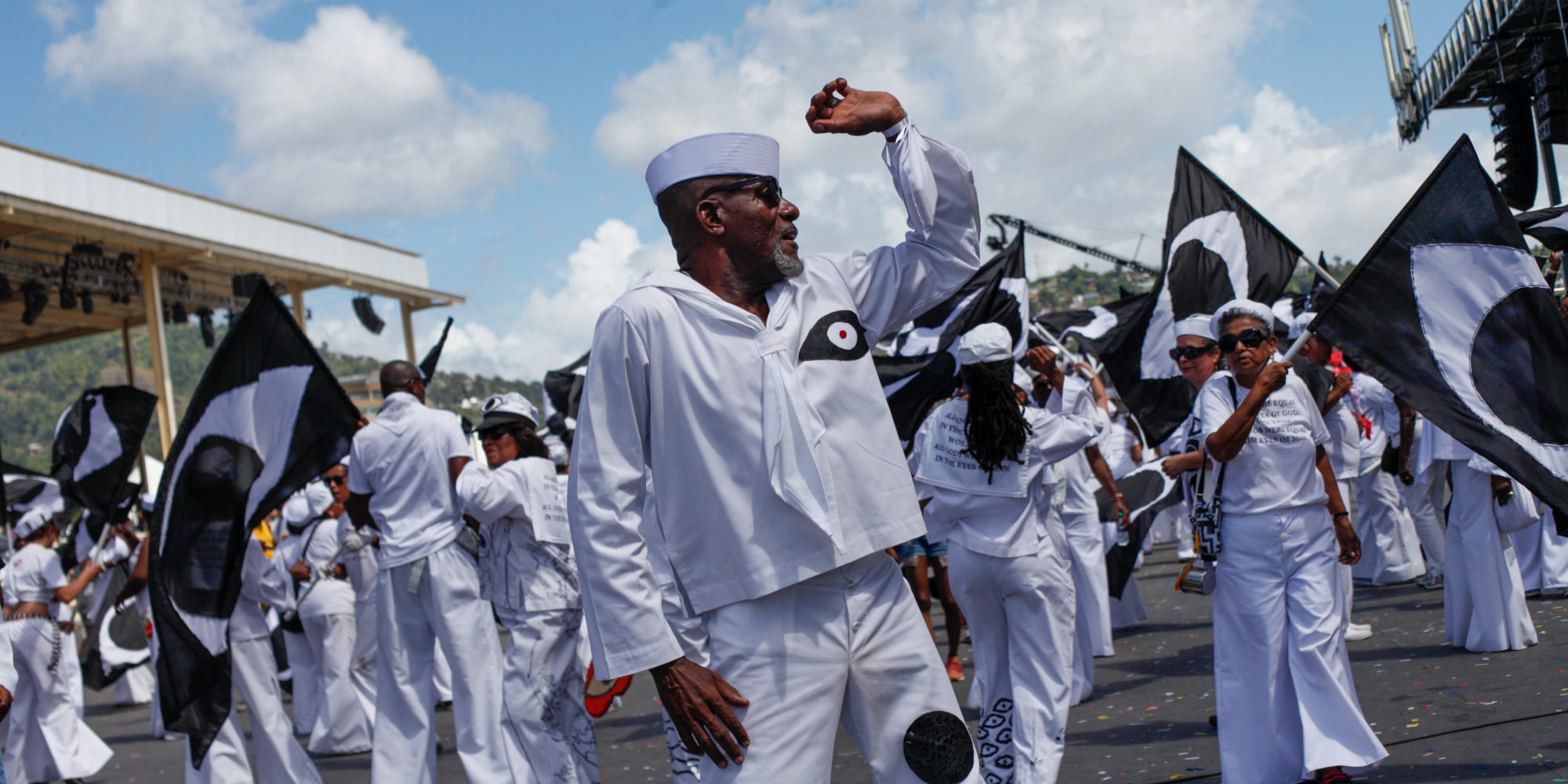In an earlier post, we took a look at masquerade traditions in Trinidad and Tobago. Carnival masquerade--or mas--goes deep in Trinidad, with a beautiful array of traditional characters and gorgeous, innovative artistry. These days, there's a debate over the state of mas today. Popular mas costumes have trended towards skimpy, feathery and glamorous showpieces, adorning bands of up to 5,000 people in matching styles. Most people who are on the road on Carnival Tuesday fit into this category, dancing through the streets of Port of Spain with colorful feathers bouncing. With prices for being a part of these bands reaching upwards of US $1,000 (including a costume, drinks, food, security and bathrooms), this is a lucrative business for the bandleaders. To dress thousands, costumes tend to be limited in variety, often relatively simple in construction and--in some cases--are even bought from mass producers abroad.
As you might expect, this is a major issue for some folks. National Carnival Commission (NCC) Chairman Colin Lucas sees the change as stripping away a unique Trinidadian identity from mas and merging it with global Carnival aesthetics, dominated by those of Brazil. This might appeal to a broader global audience, draw in more tourists and more money, but the result is a loss of some of the creativity that has defined Trinidad's masquerade.
Not only does the trend towards mass-appeal costumes diminish artistry, its detractors say, it entirely changes the social landscape of Carnival. In times past, mas bands were more loosely arranged--often just groups of friends who made costumes and paraded together. These days, the exclusivity of huge bands with high fees and security create divisions between revelers--the Carnival parades gain more of an audience-performer orientation (masqueraders in the road and observers on the sidewalks). There are cheaper, less mainstream options for people who want to masquerade, but not nearly as many, nor as large in scale. There is also a growing movement of people who are snubbing the massive mas bands, making their own costumes and marching with friends.
However one chooses to masquerade, if you take to the road Carnival Monday and Tuesday, you will be joined by hundreds of thousands of others, dancing and drinking down the streets from dawn till night. Bands are fueled by bars on trucks and 18-wheeler sound systems blasting soca hits full blast. Monday is more like casual mas, with simple outfits often of individuals' own designs. Here are some photos from the road and stage on Monday. Photos by Sebastian Bouknight.
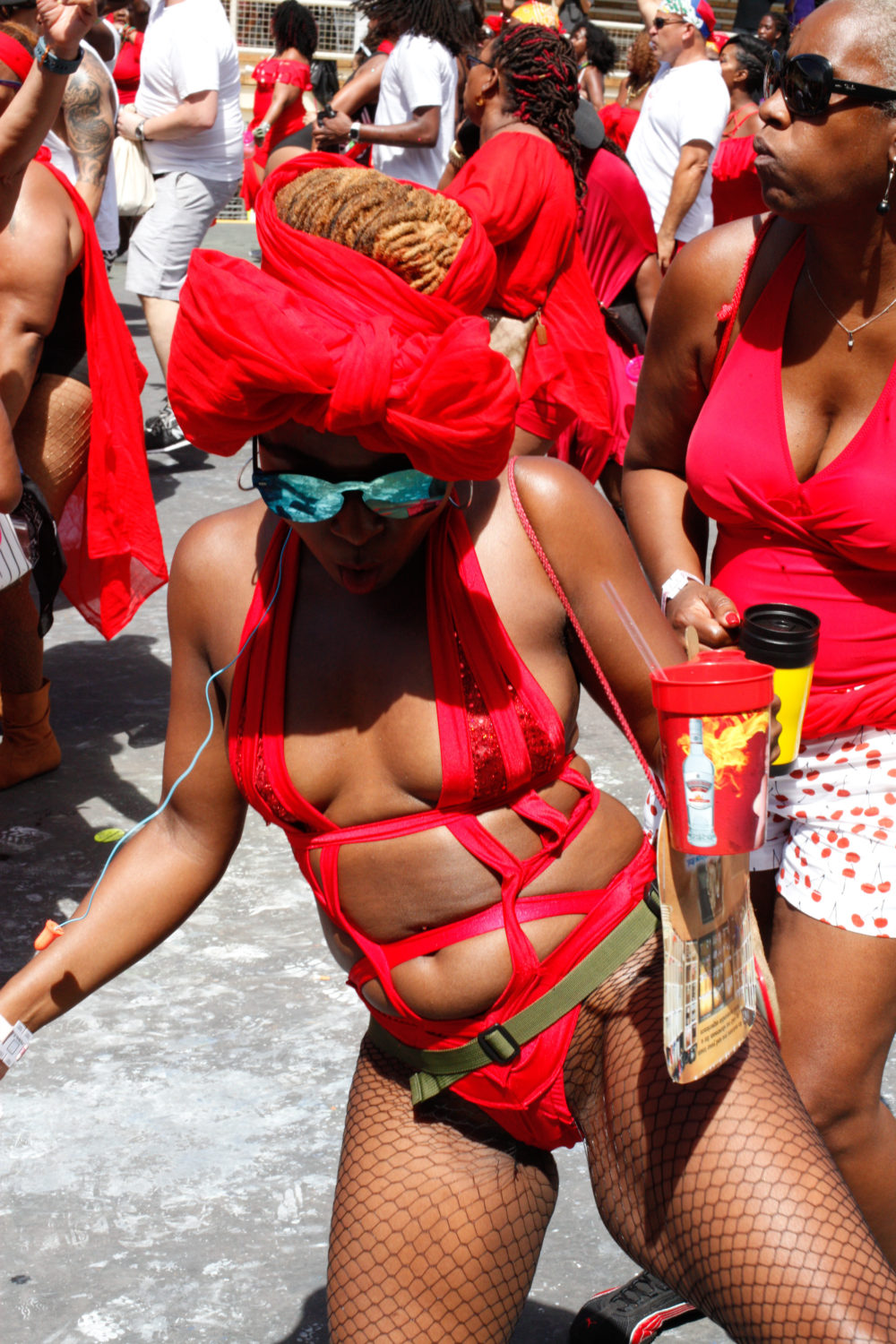
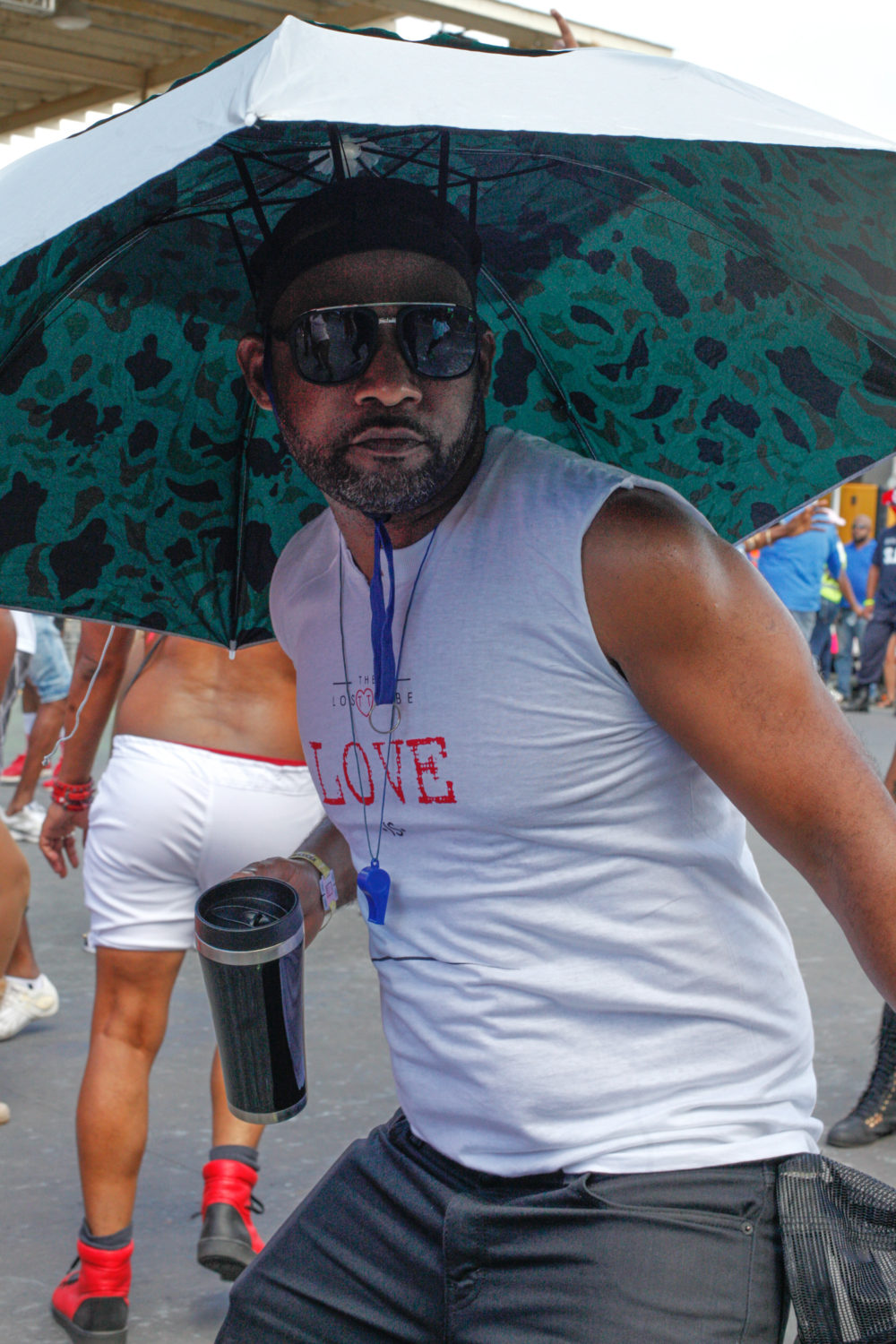
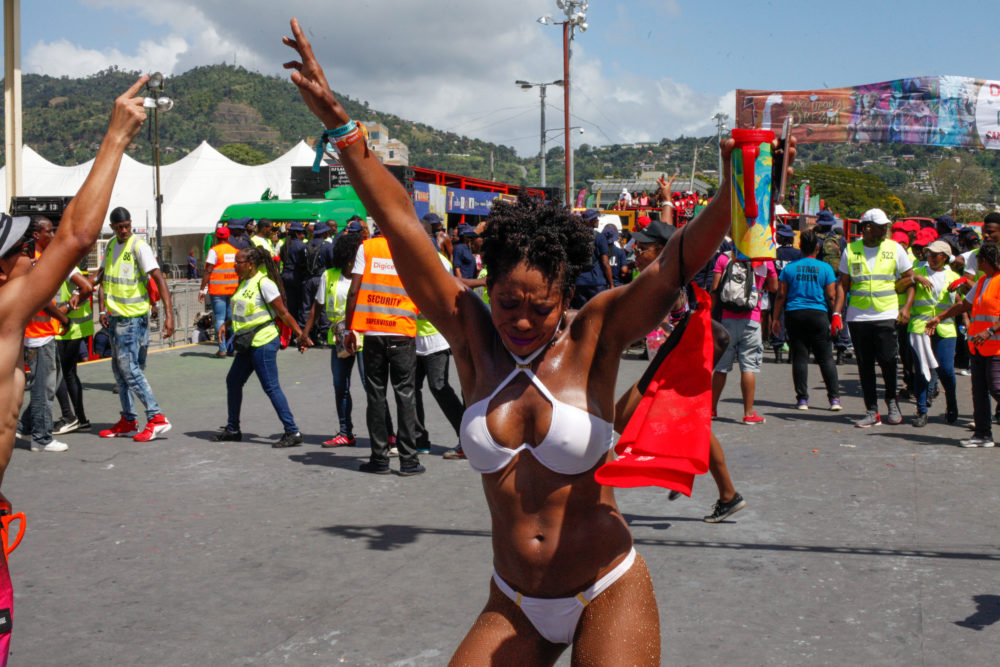
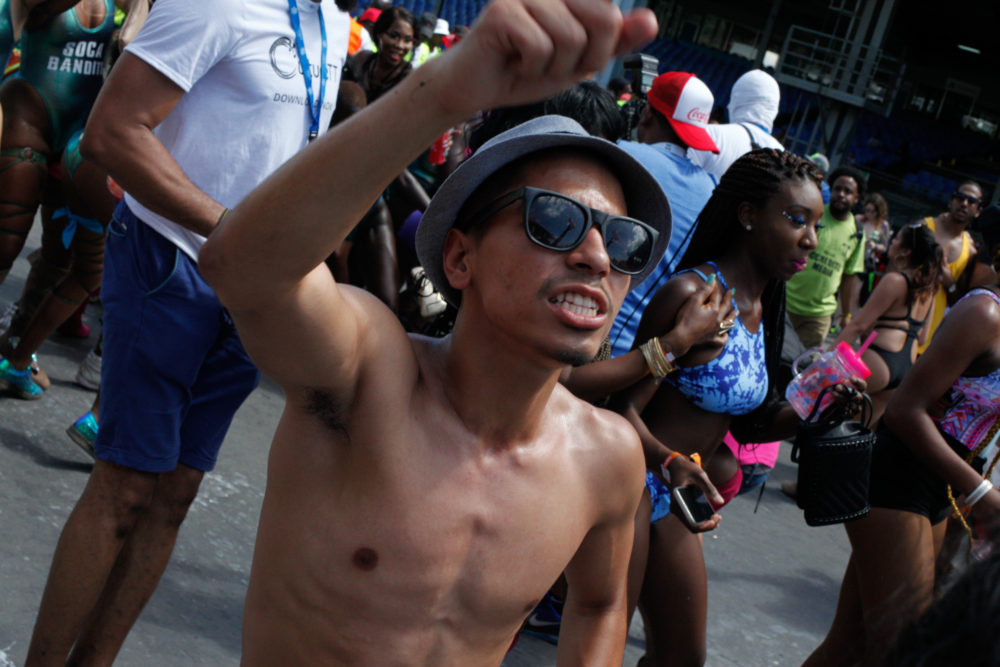
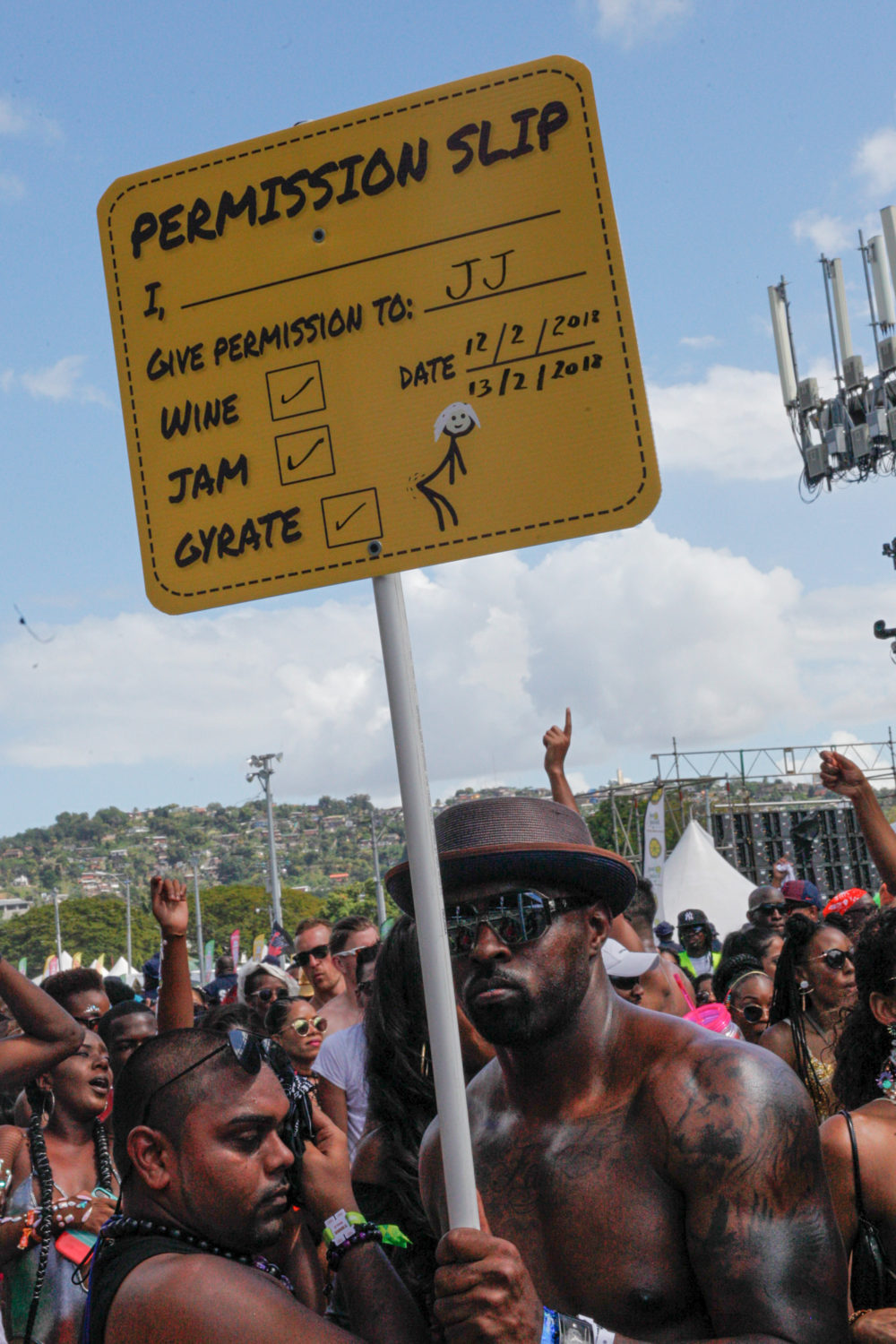
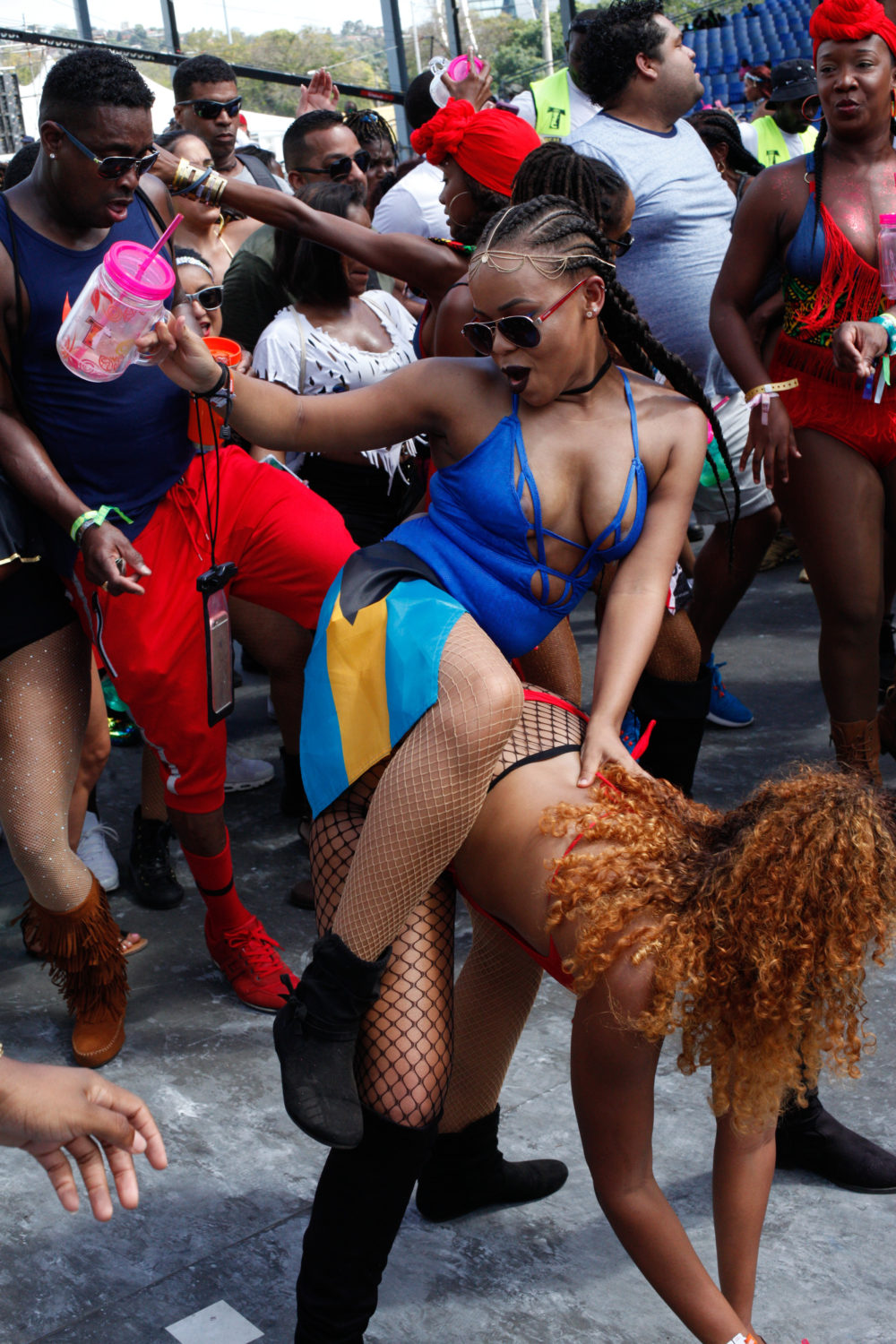
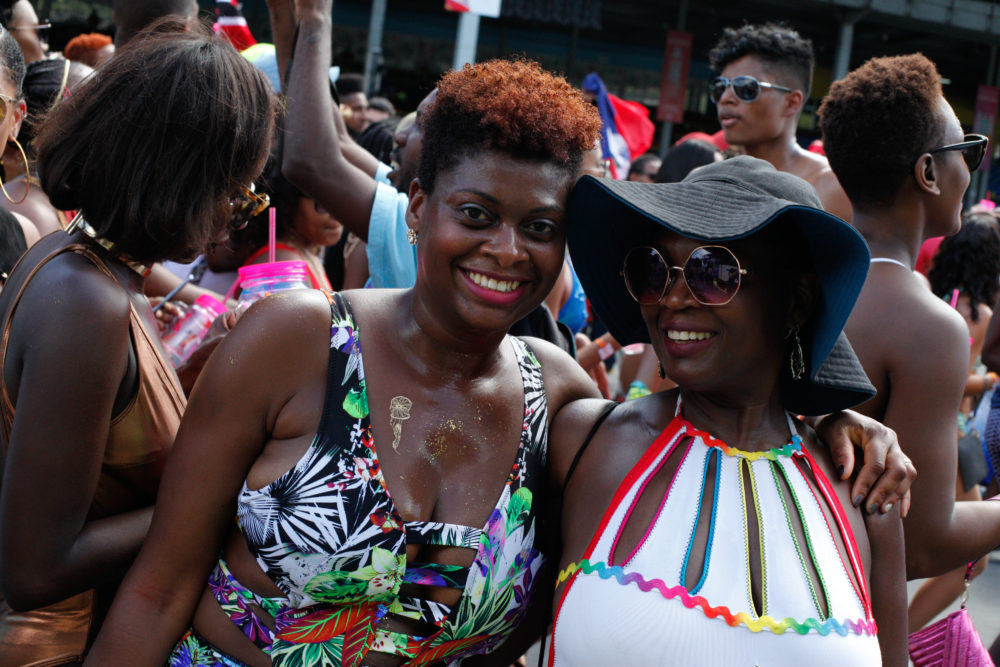
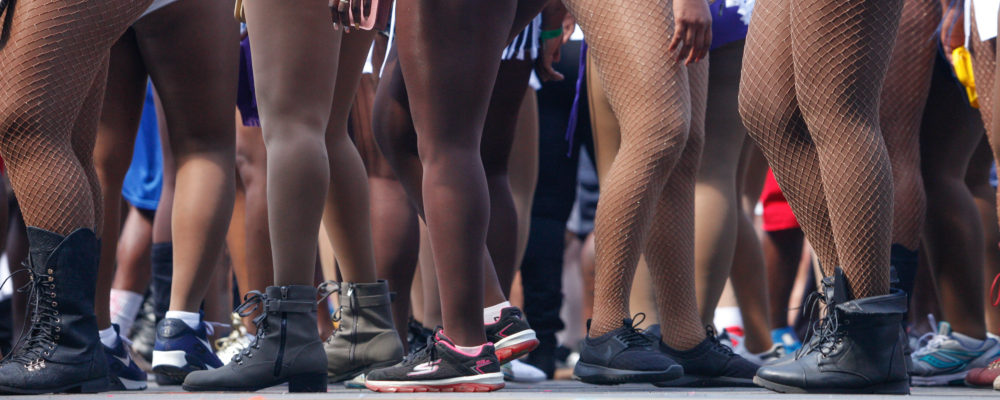
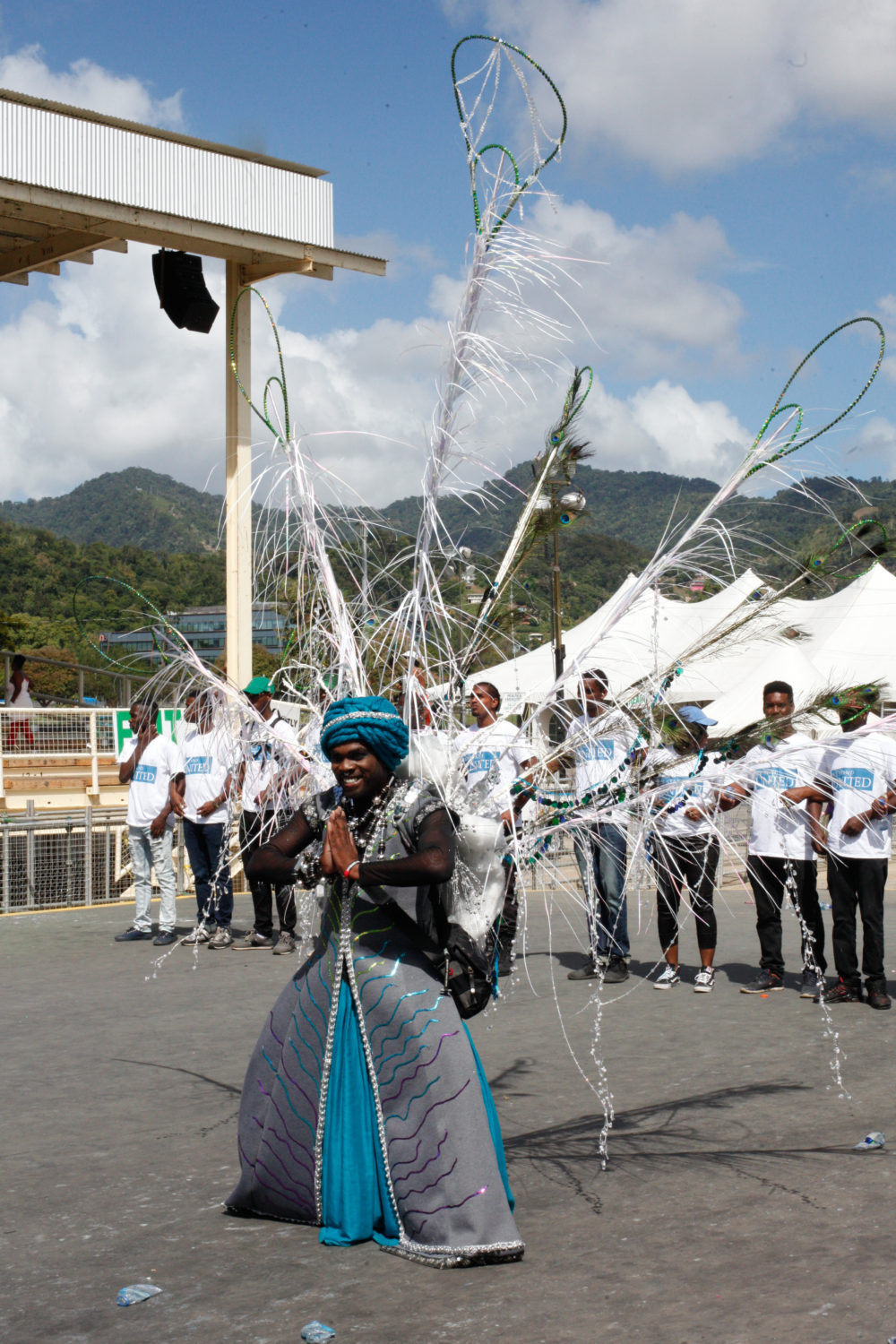
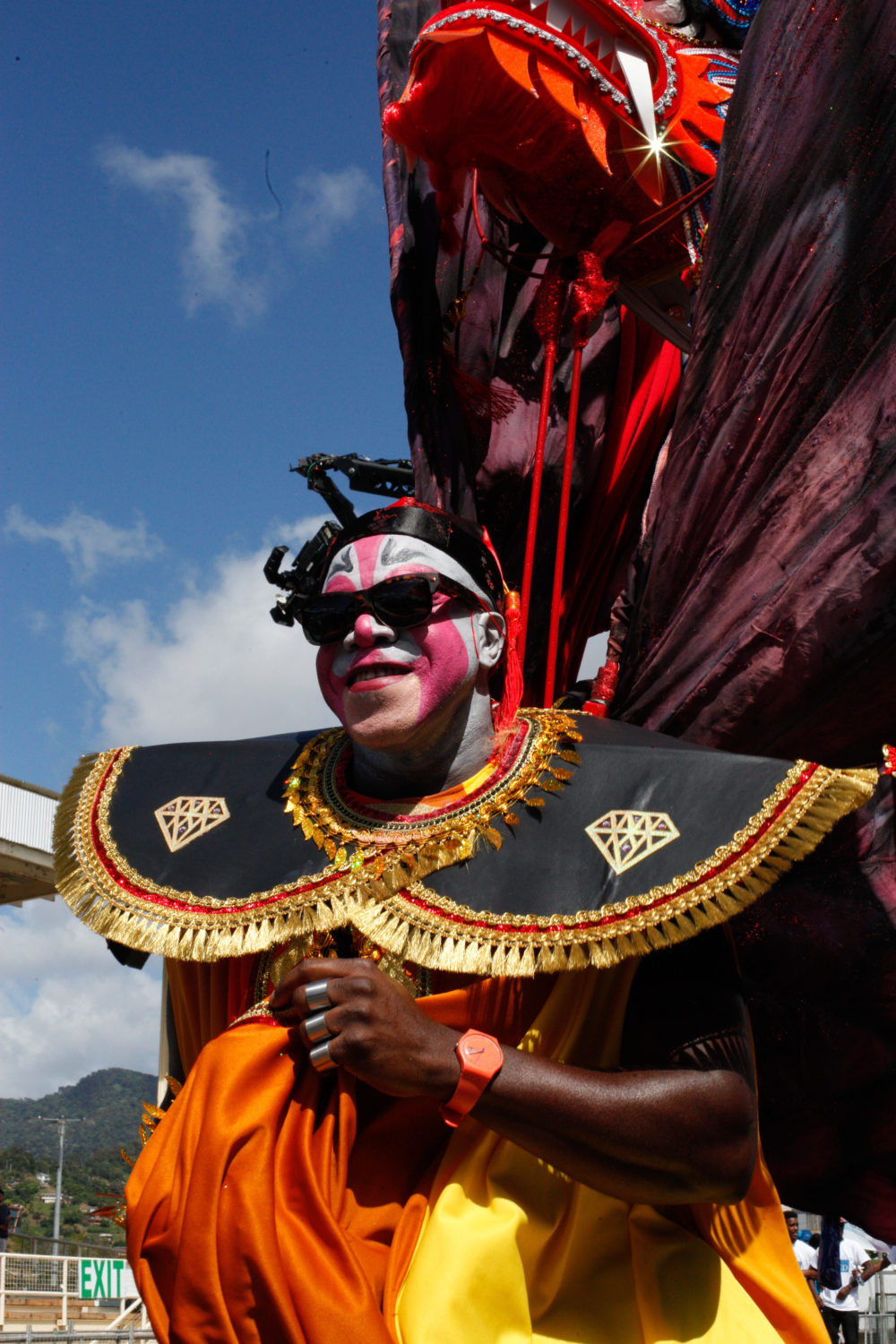
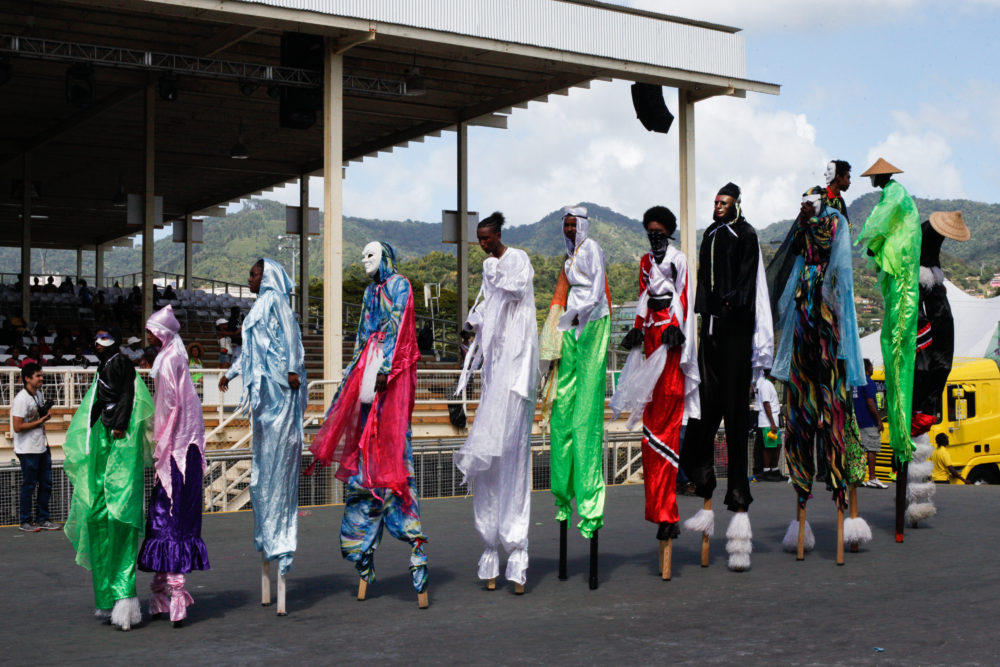
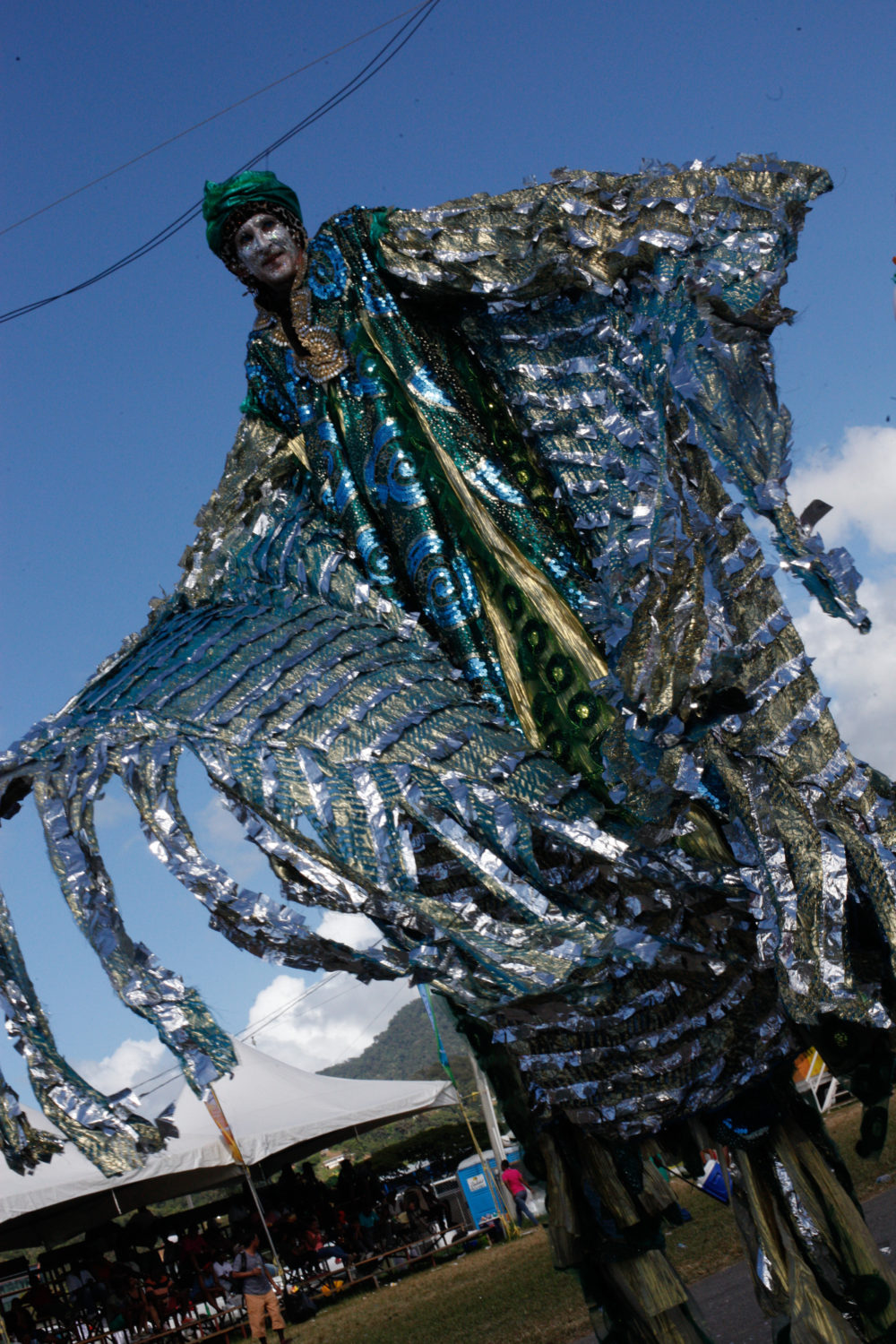
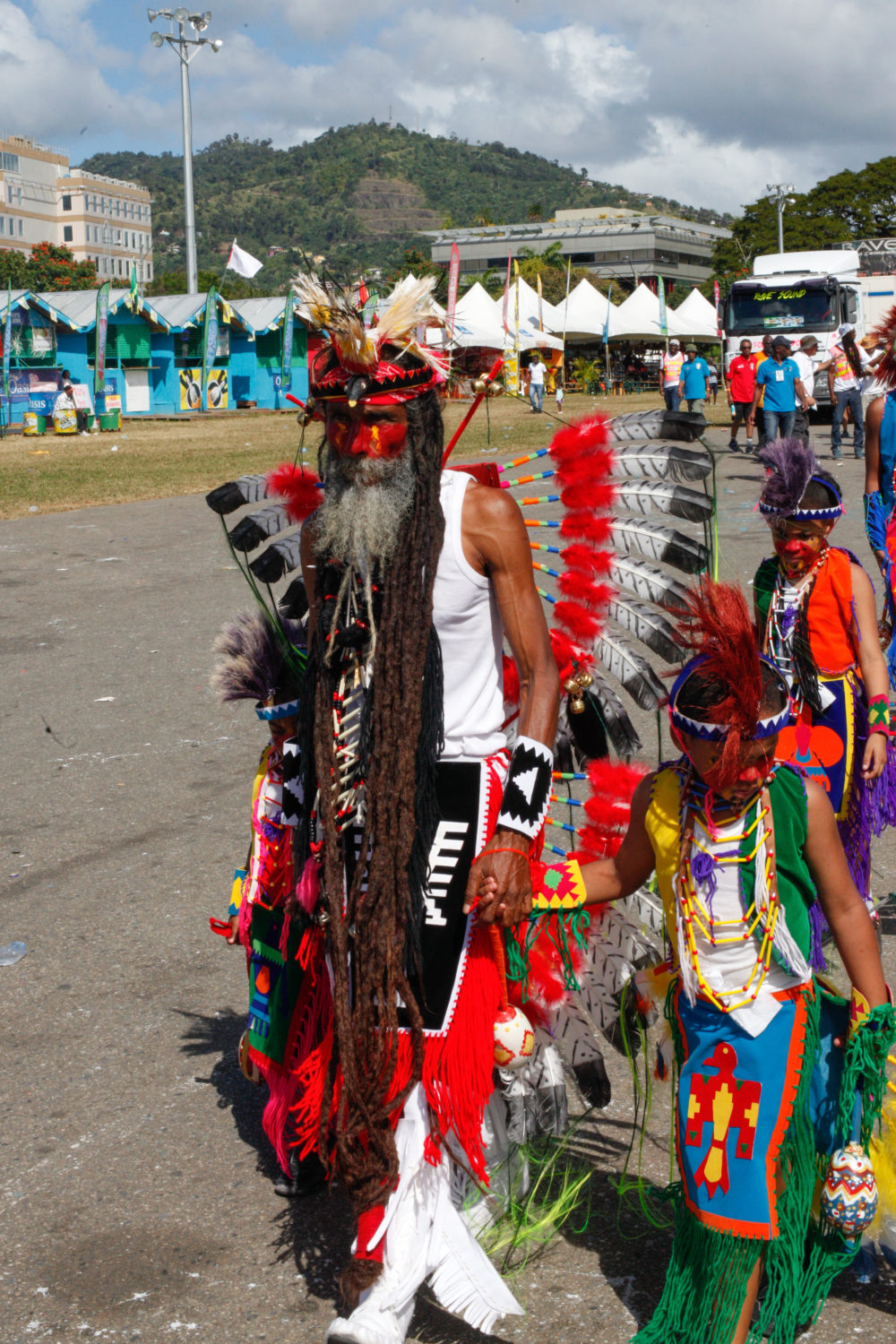
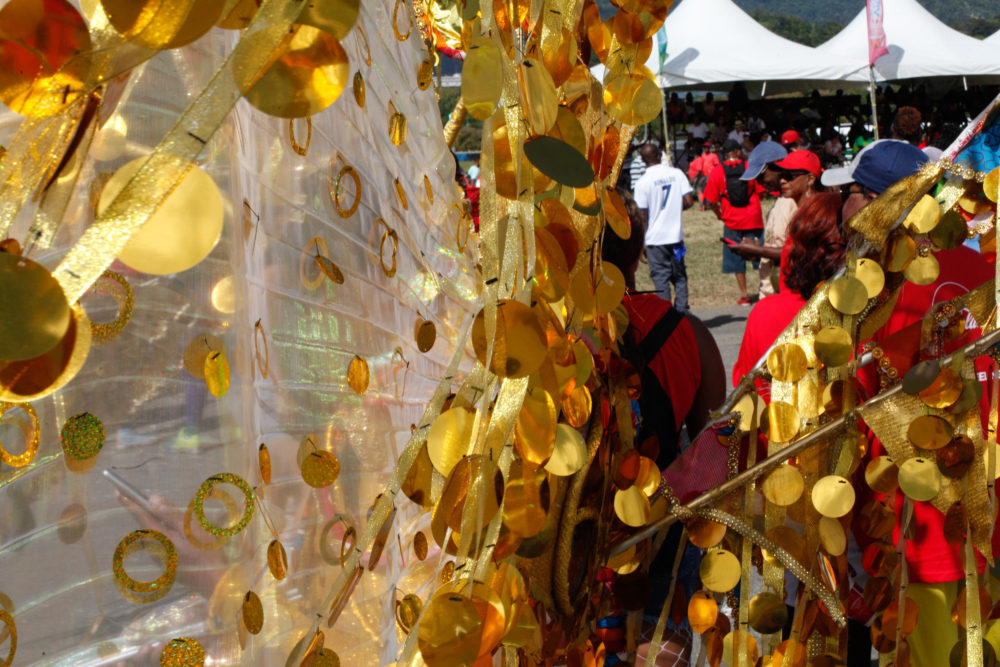
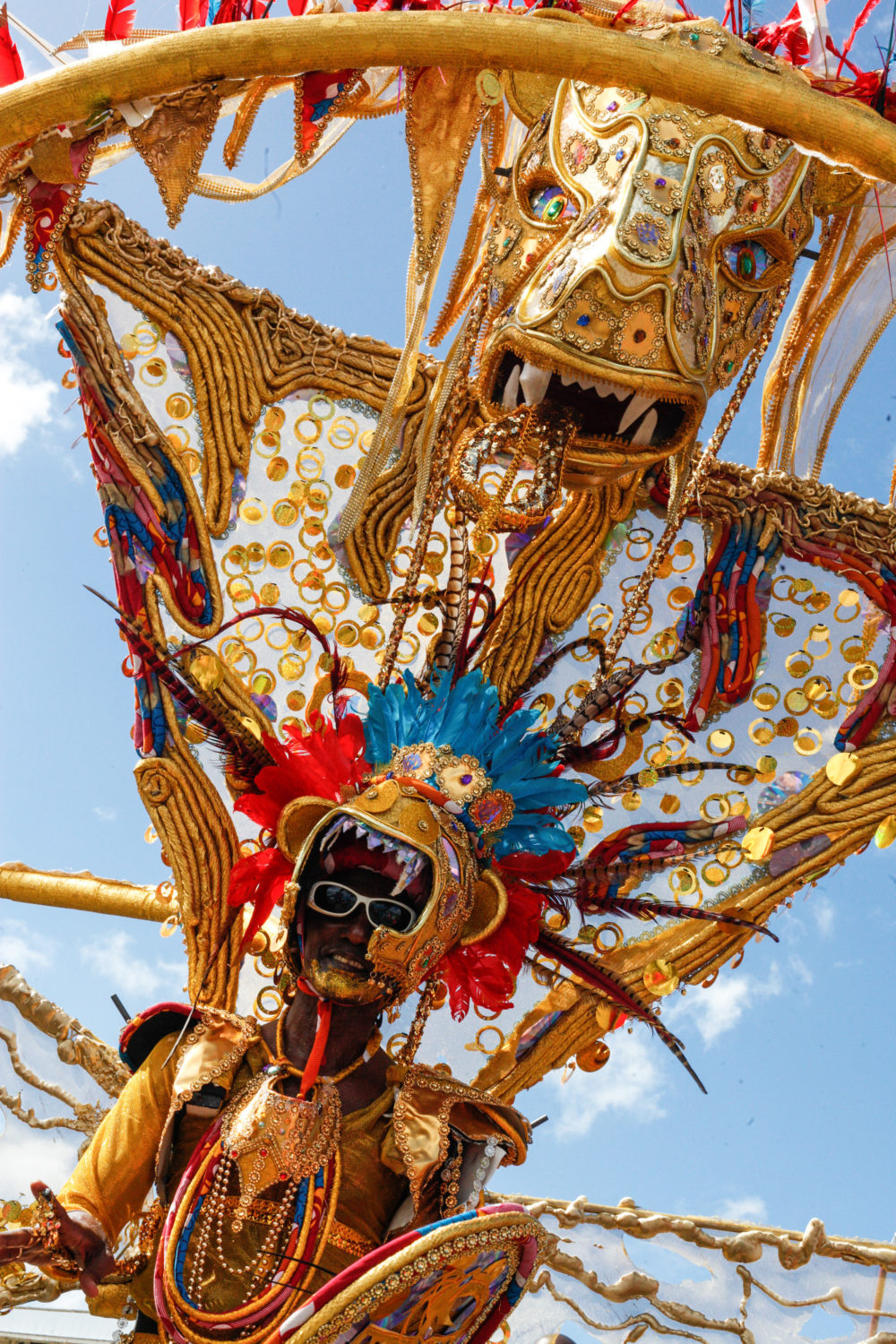
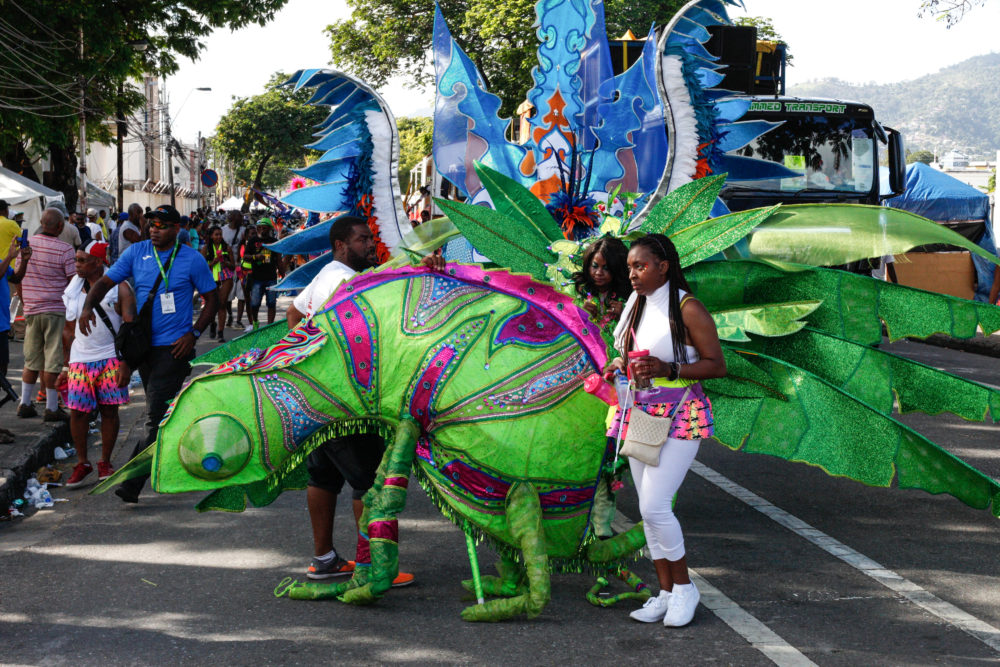
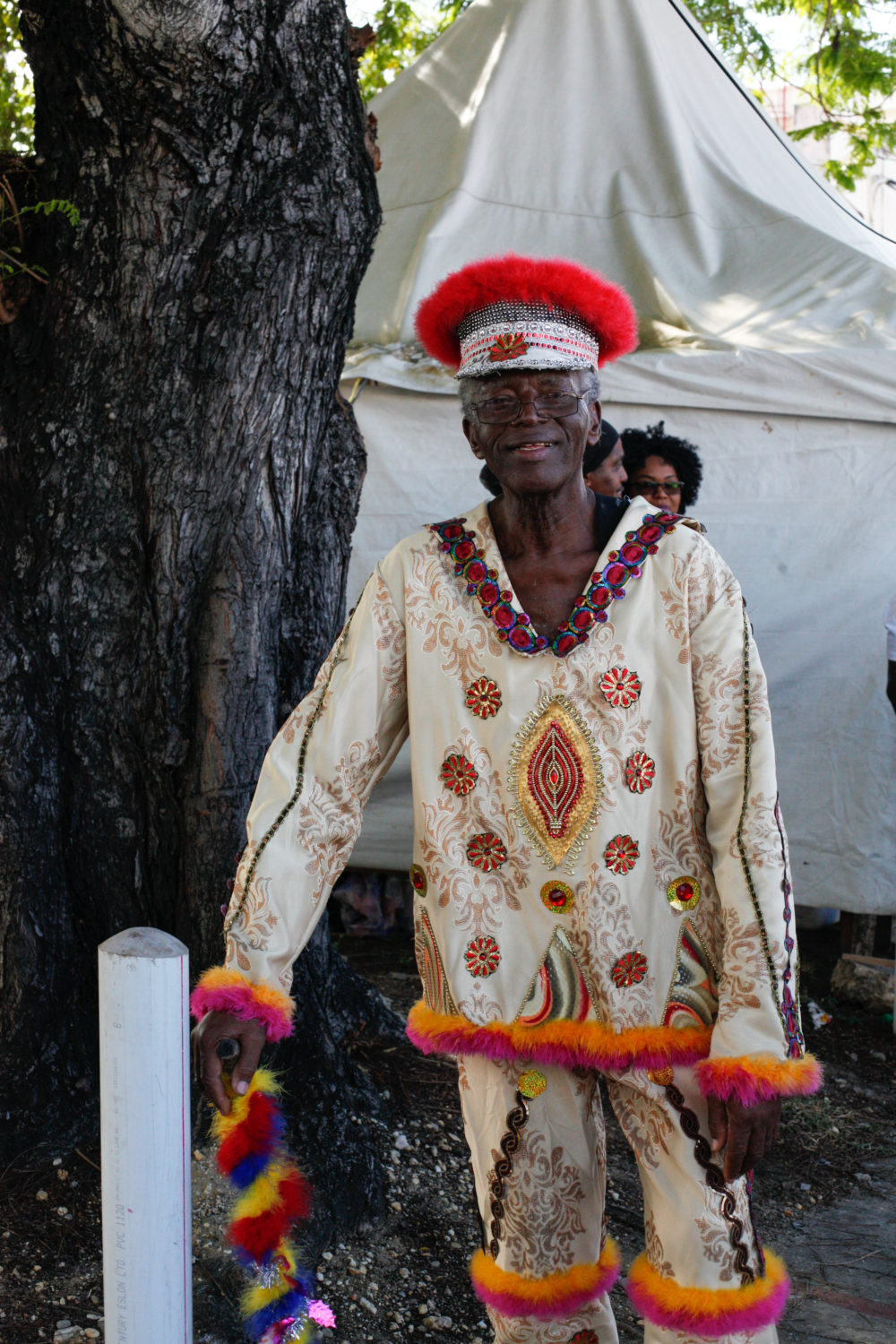
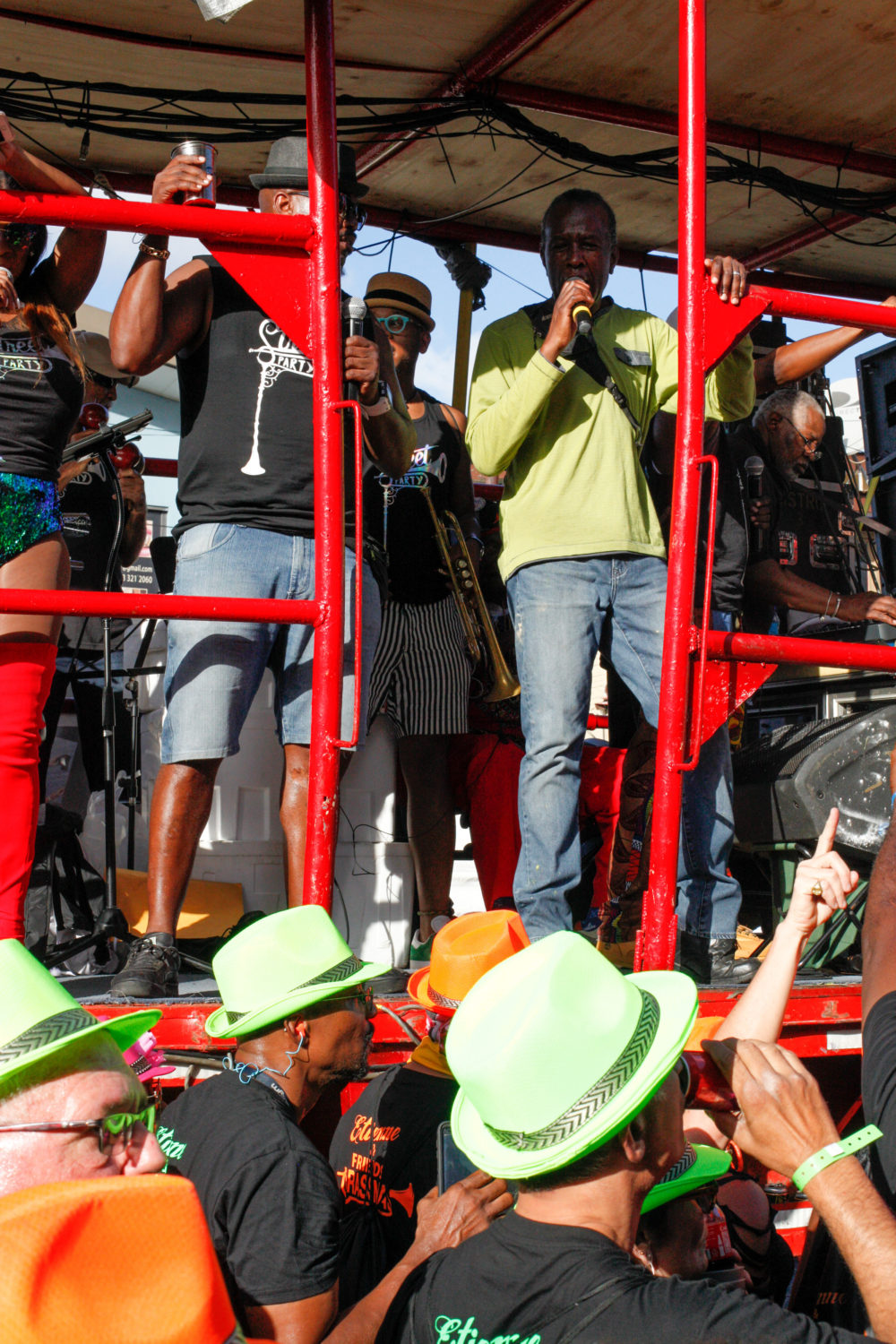
Tuesday is when the real-deal glitz and glamor come out. The extravagant costumes are on full display as the masses parade through the streets of Port of Spain. At some point during the day, every band will cross the expanse of the Queens Park Savannah stage. Here, their costumes are judged. Each band waits on one side of the stage, held back by security as the music pumps them up. When it is their turn, they are released and they run madly across the stage, dancing and showing off to the full extreme.
One of the music competitions during Carnival is called Road March. This award goes to whichever soca artist whose song is played the most while bands are on the stage. These songs are always the most hype, grand tracks of the year. This year, in a contest that boiled down to "Savannah" by Iwer George and "Soca Kingdom" by Machel Montano and Superblue, Machel Montano, the King of Soca, reigned supreme.
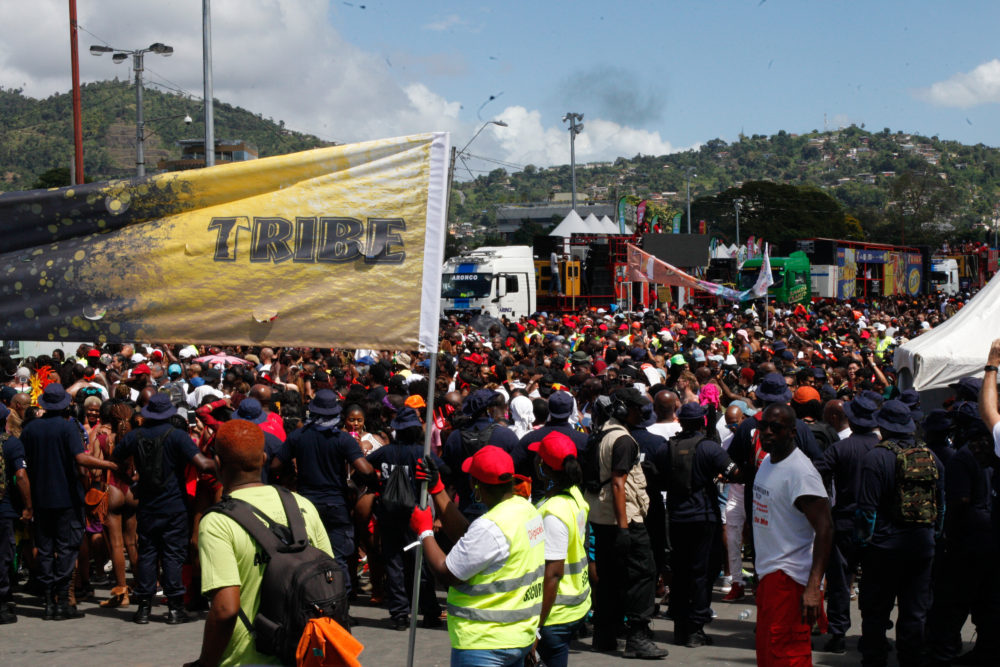
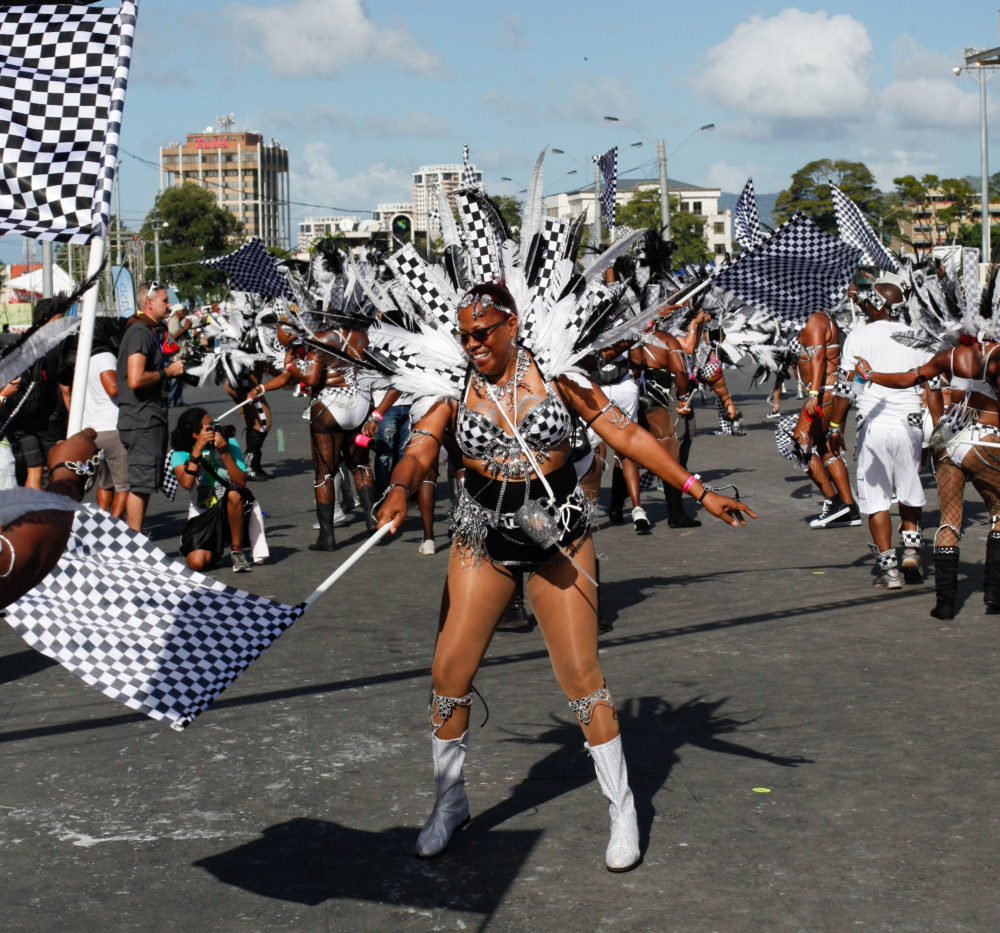
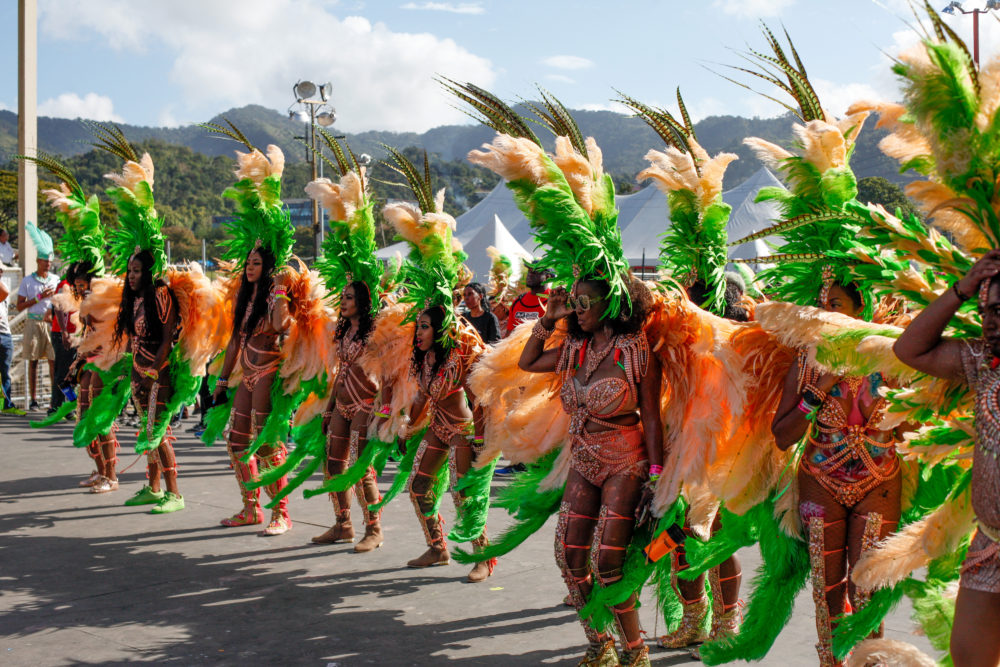
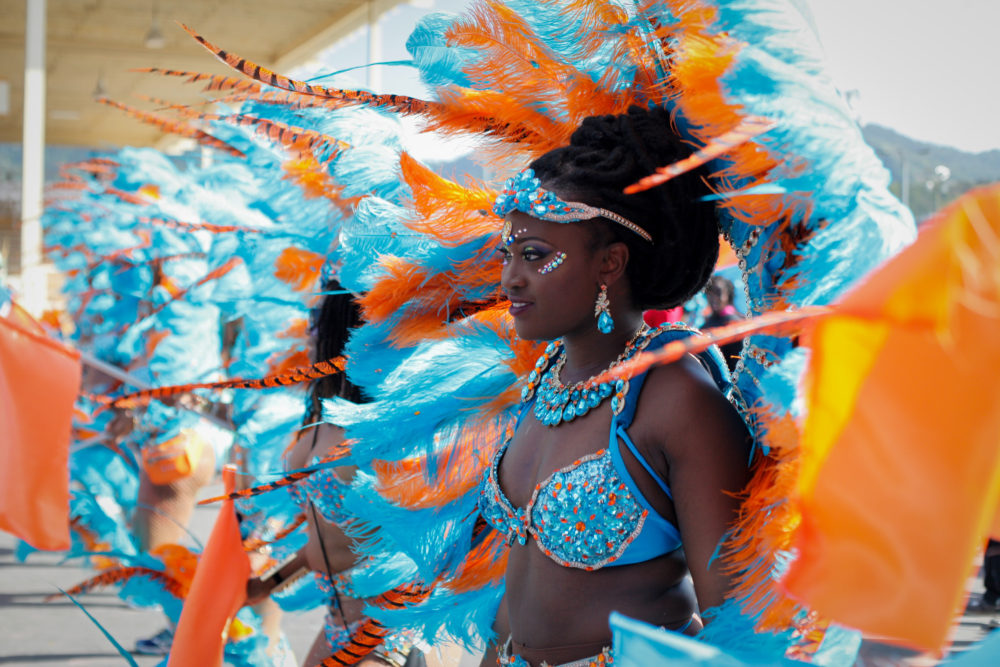
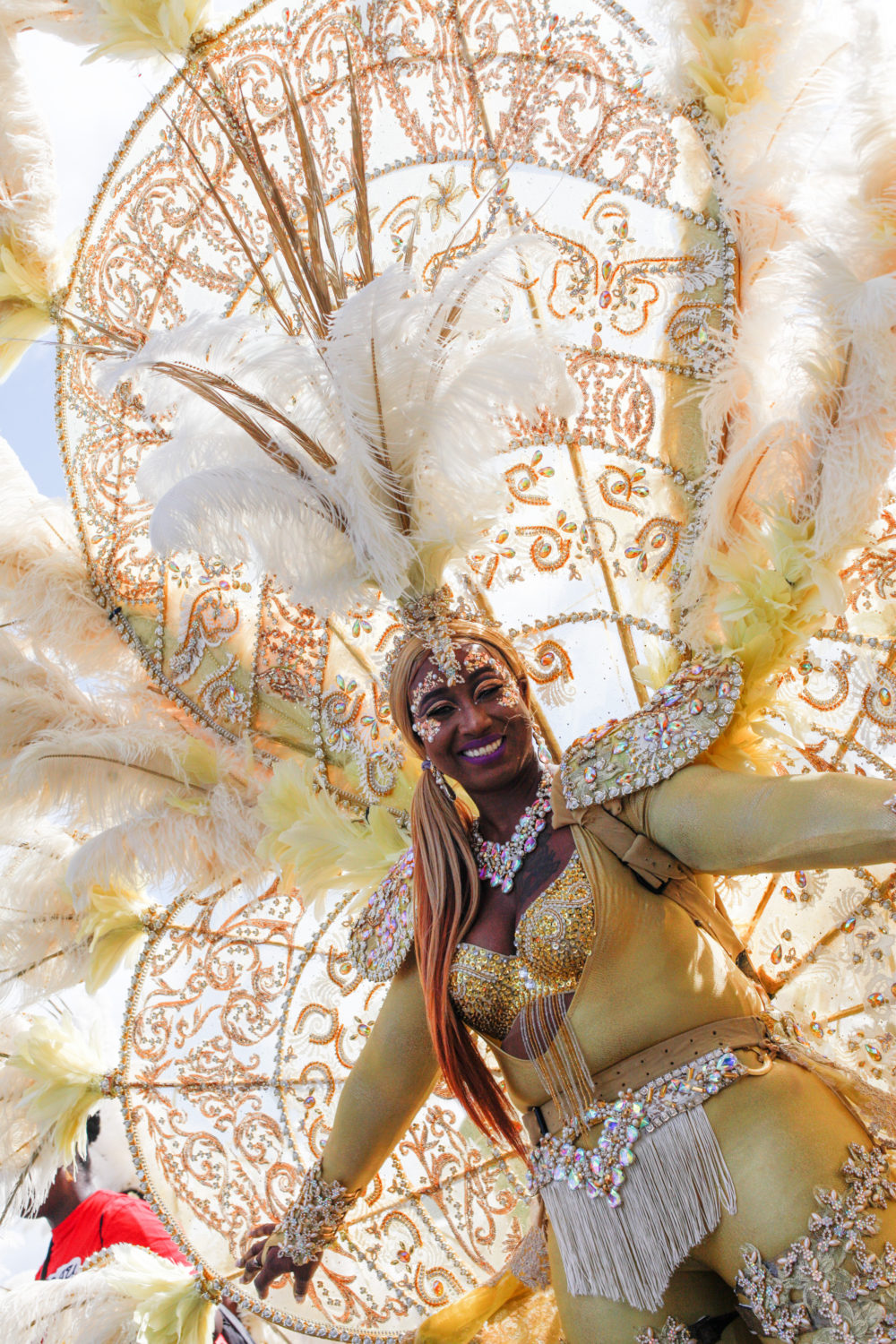
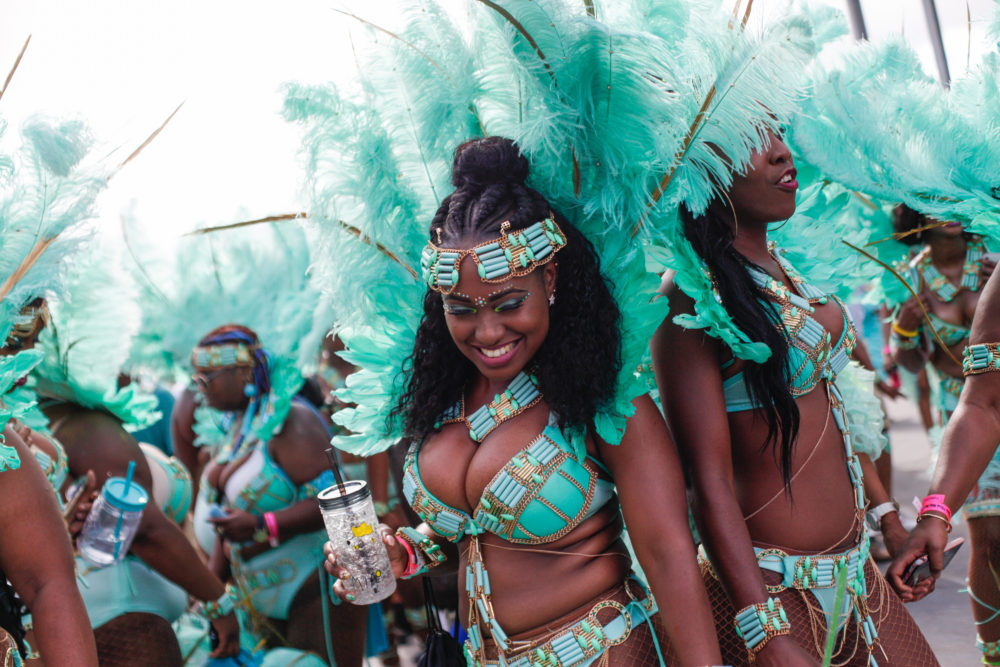
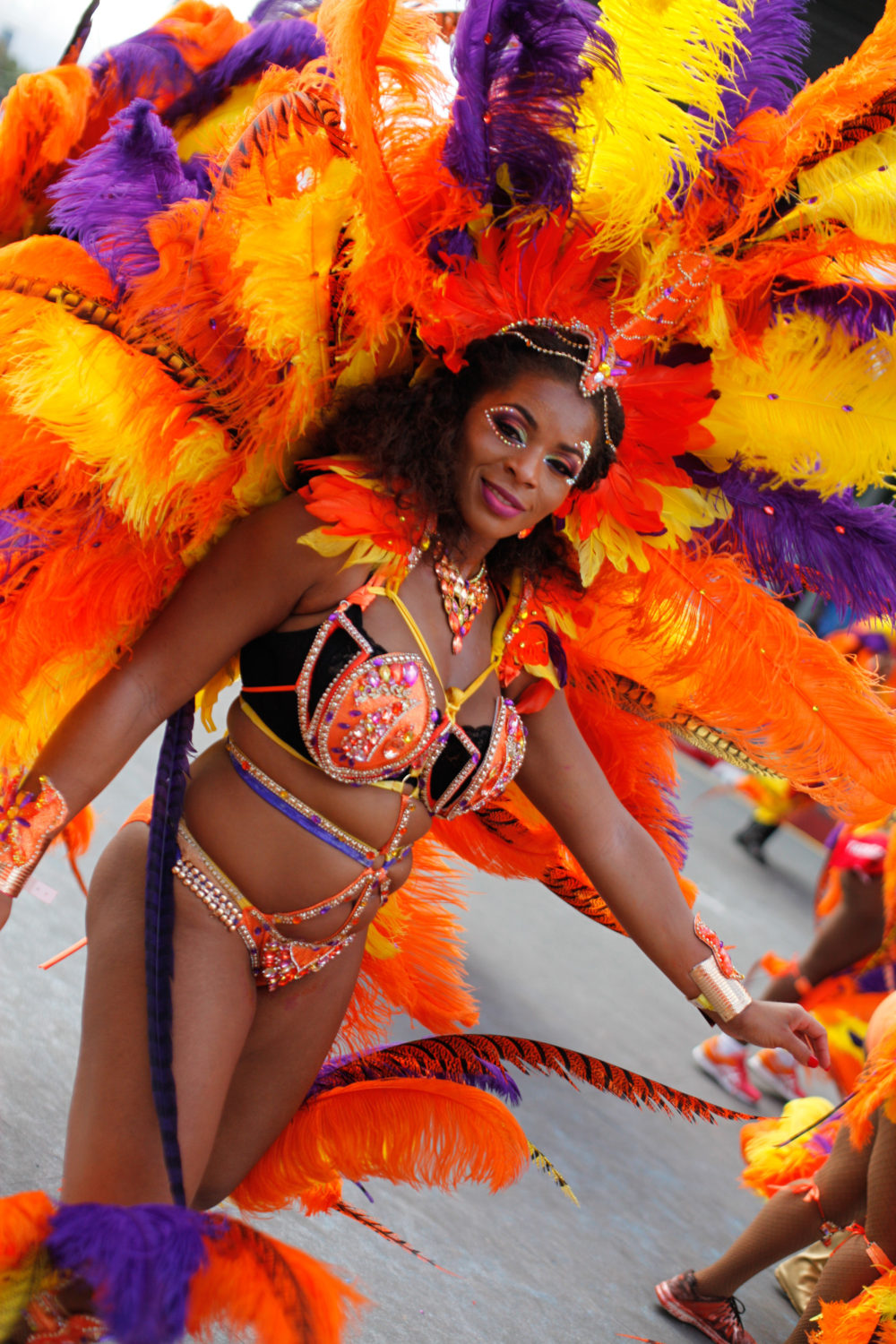
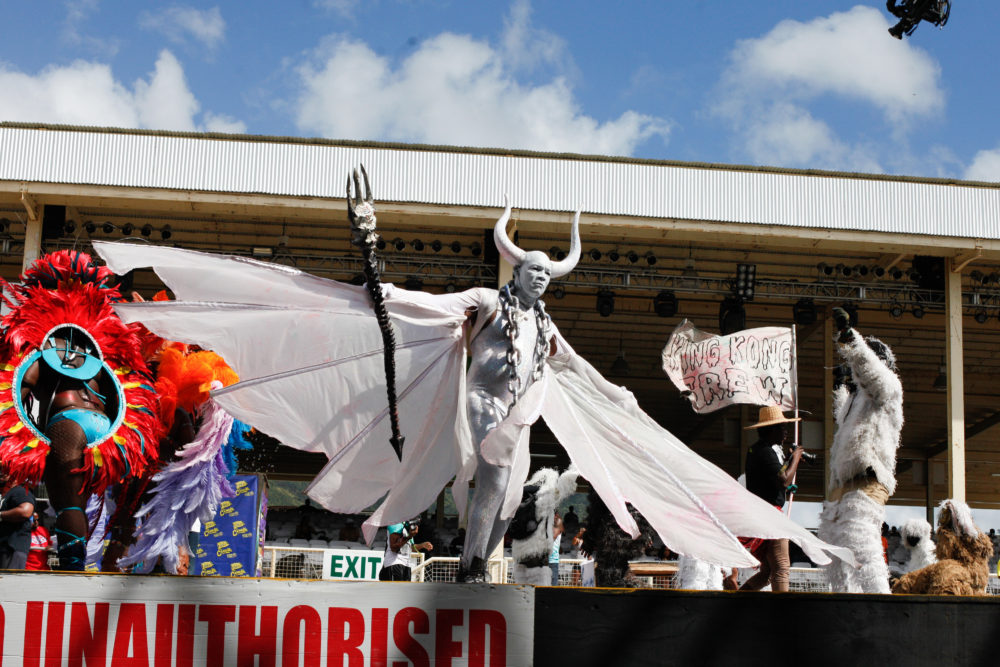
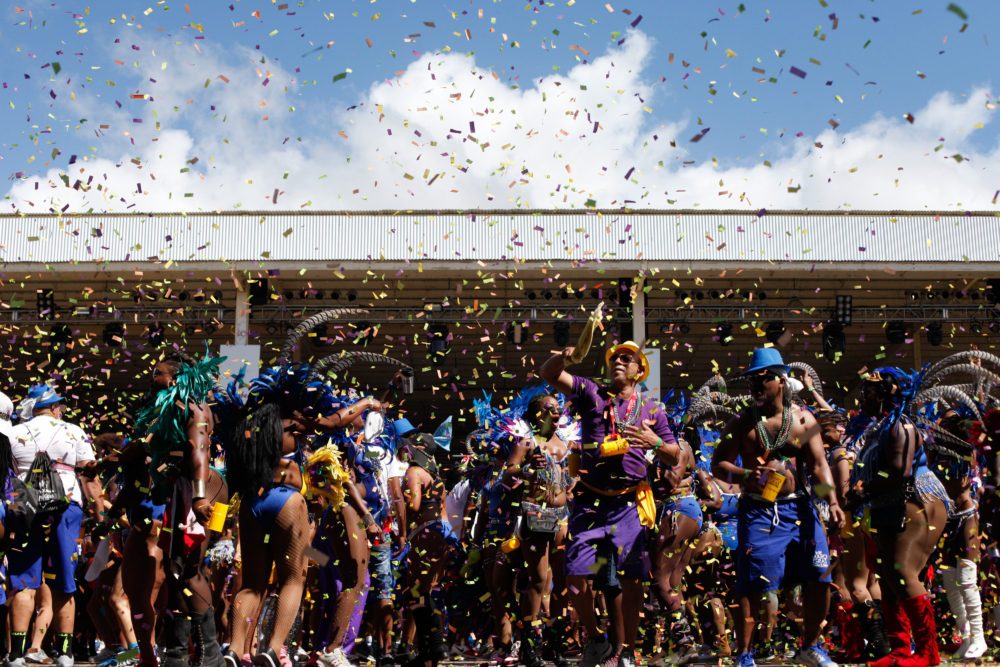
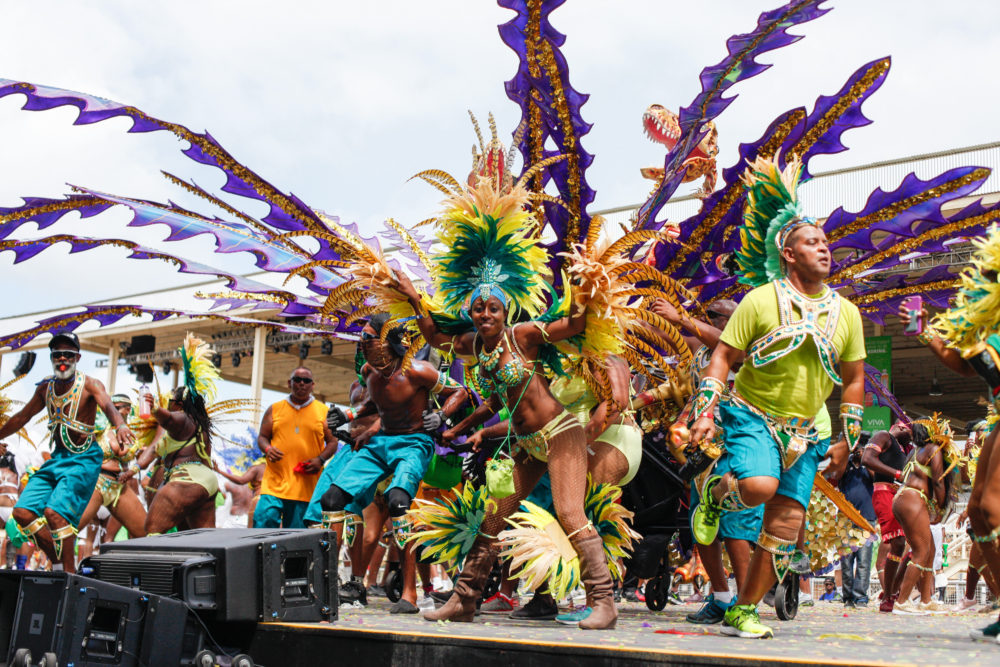
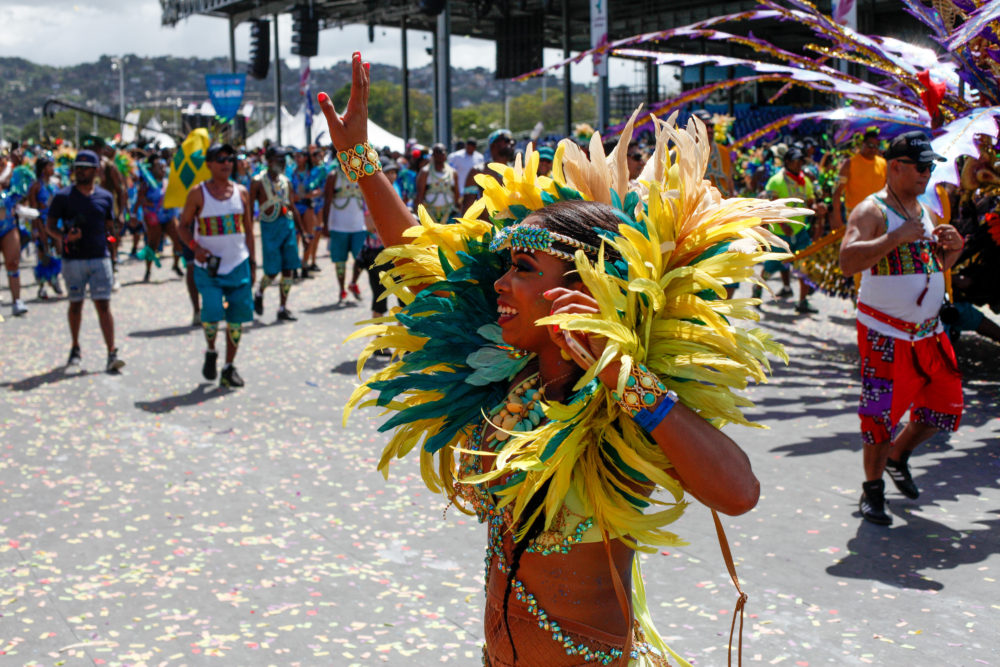
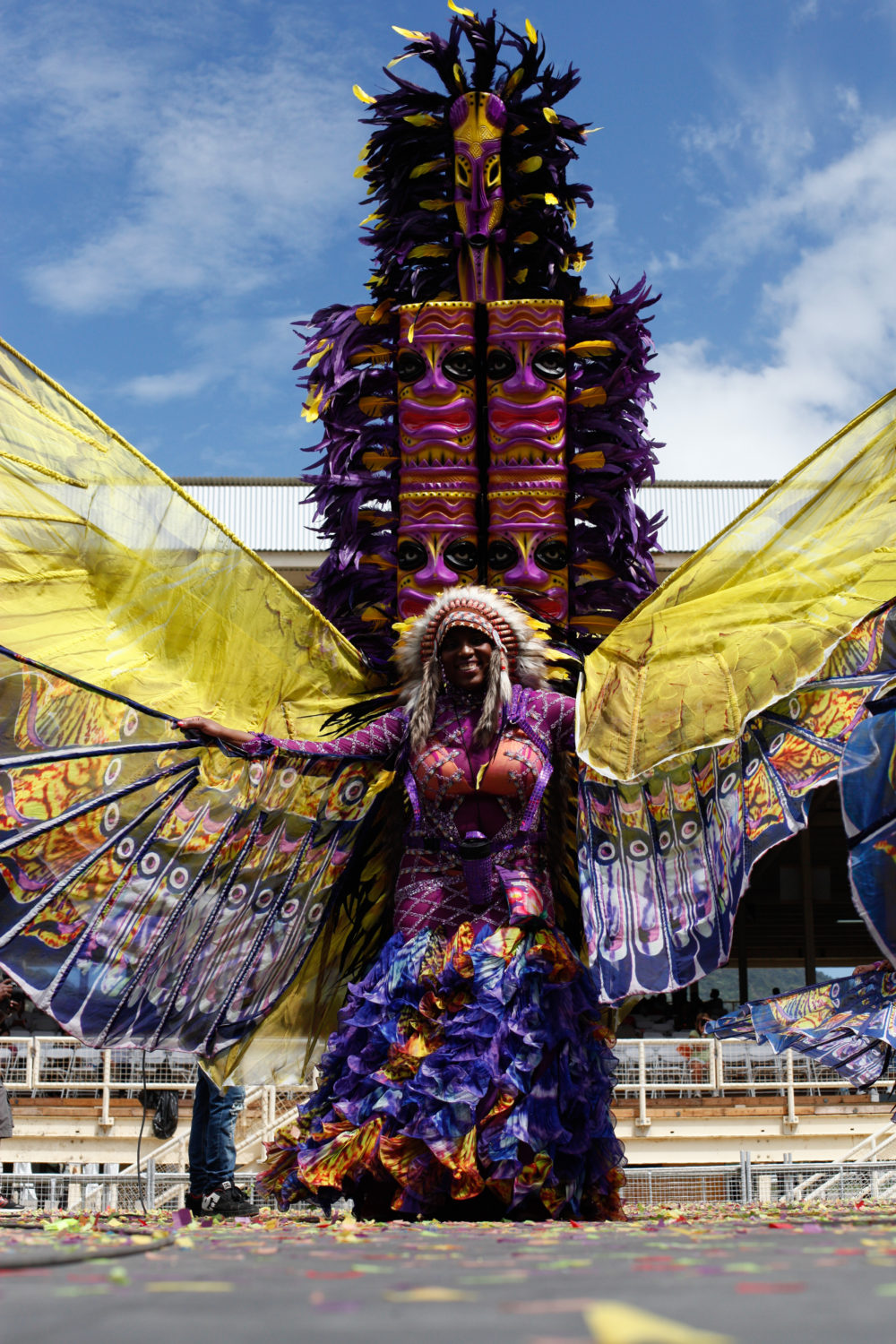
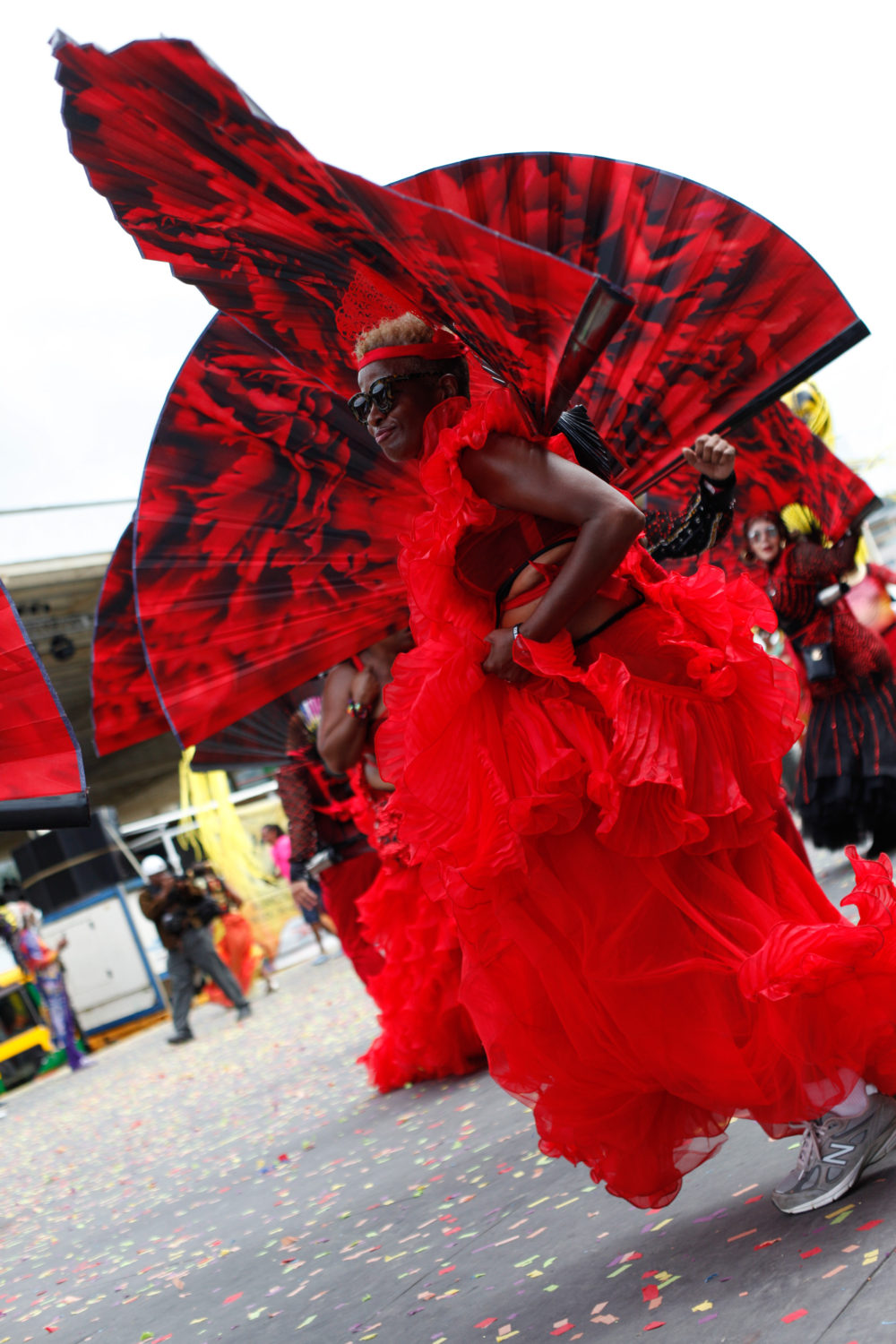
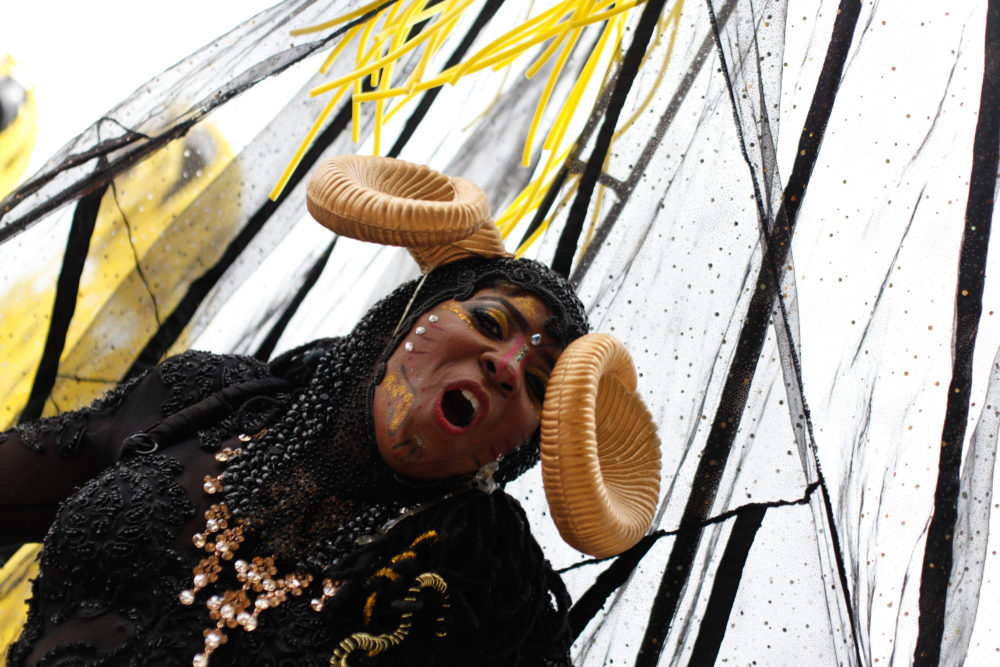
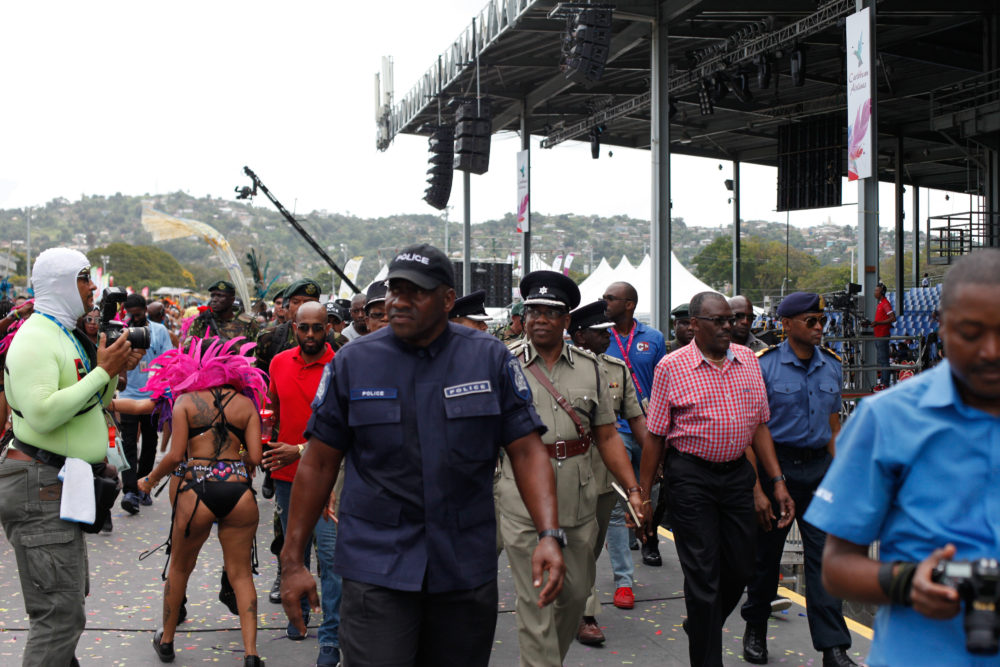
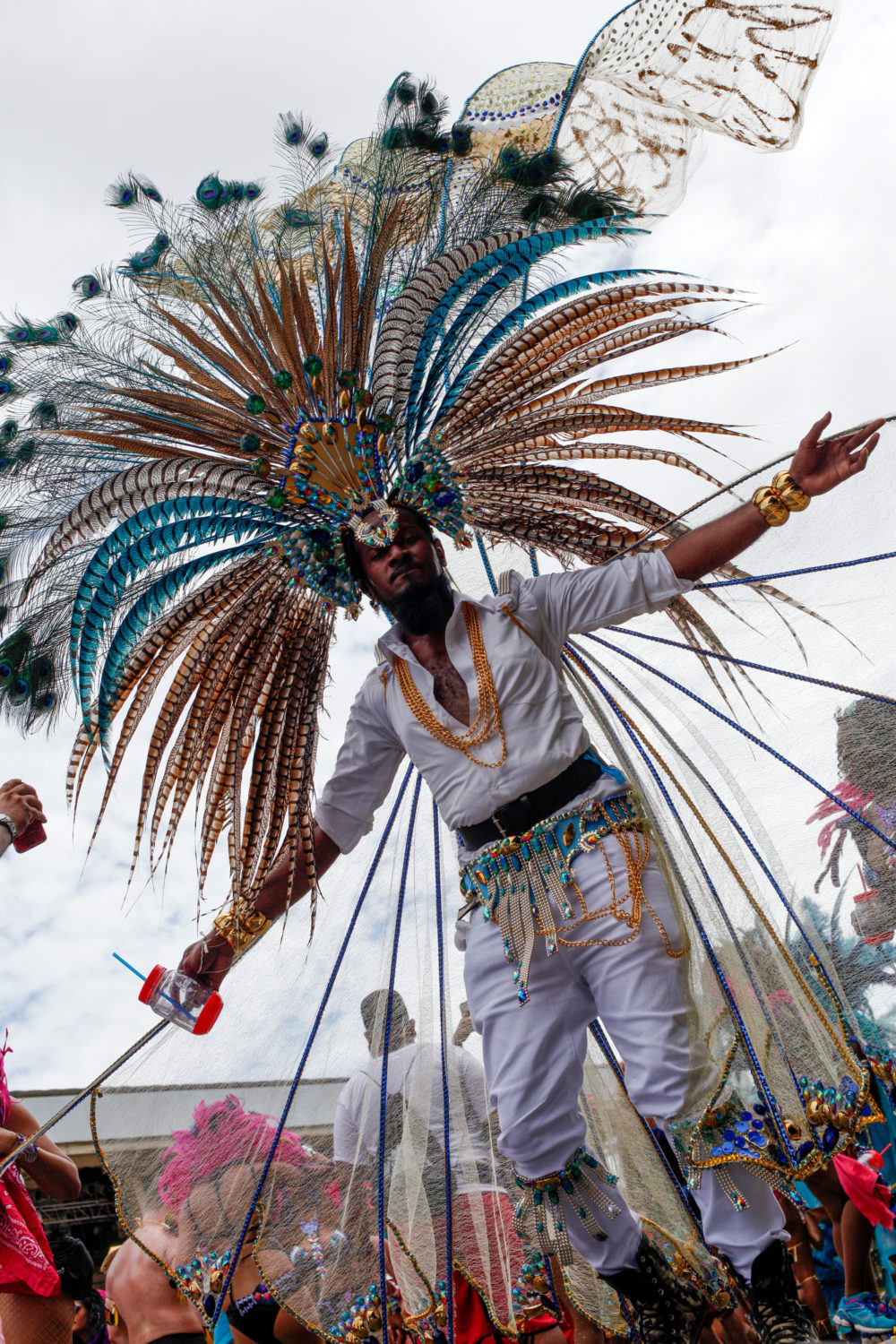
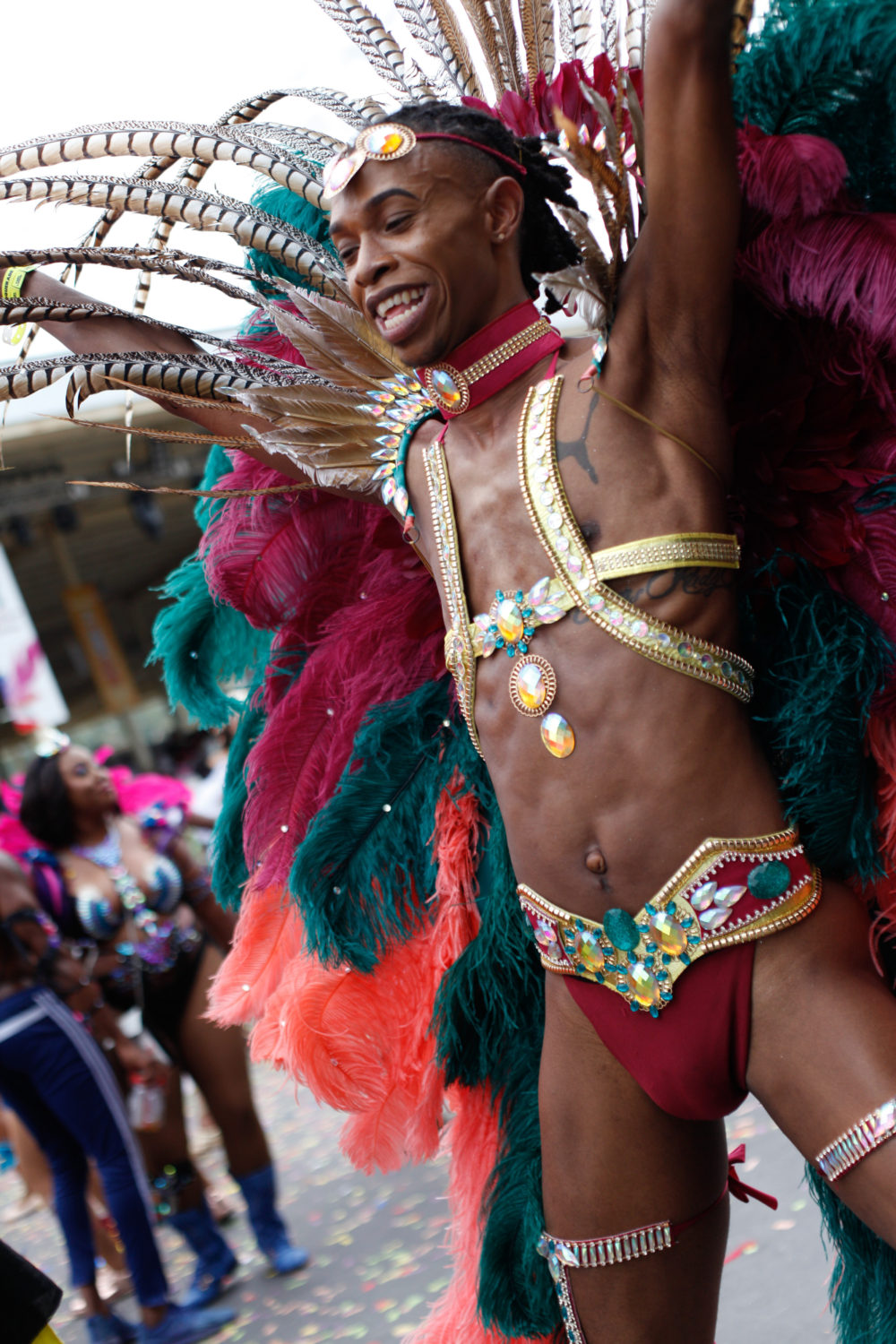
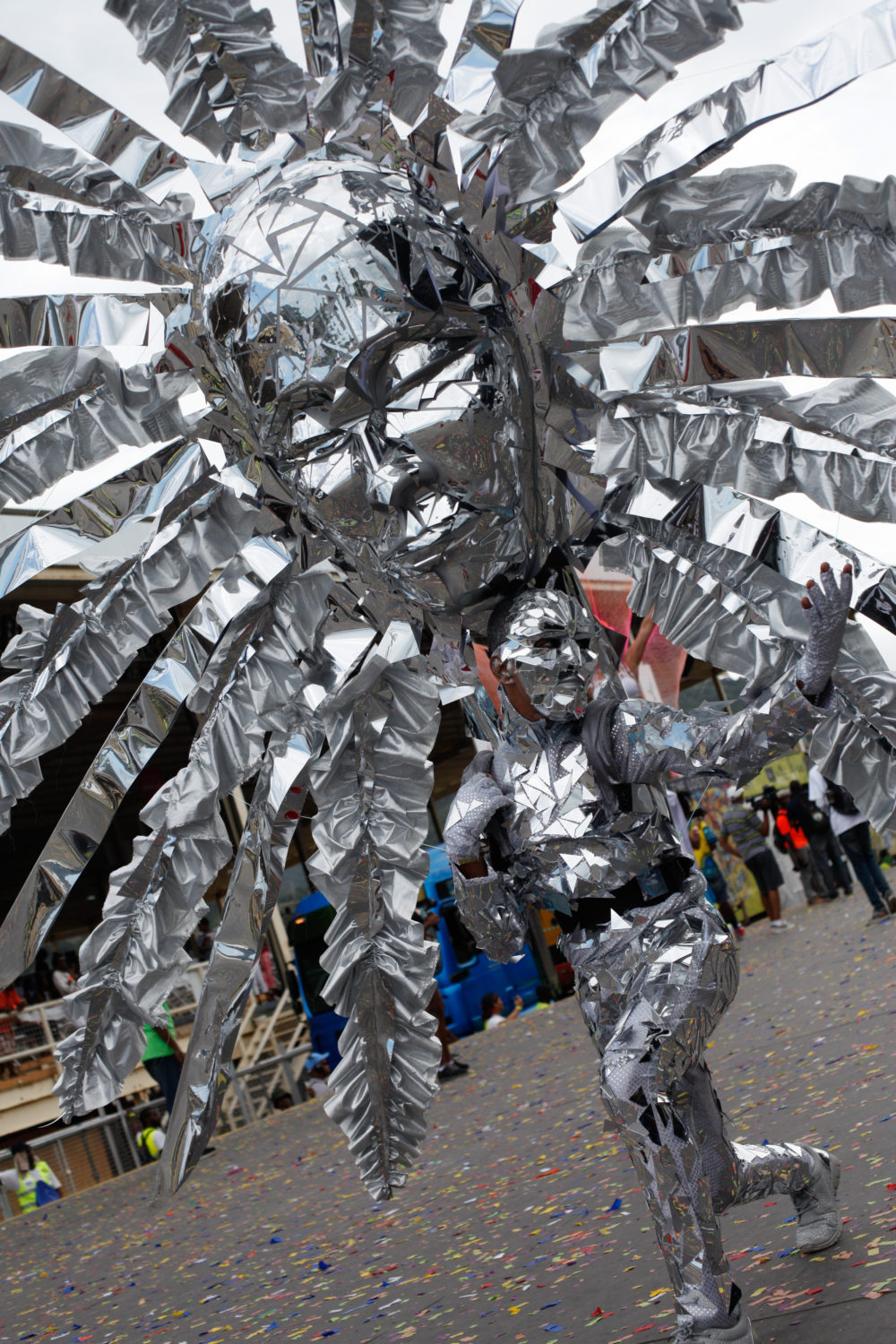
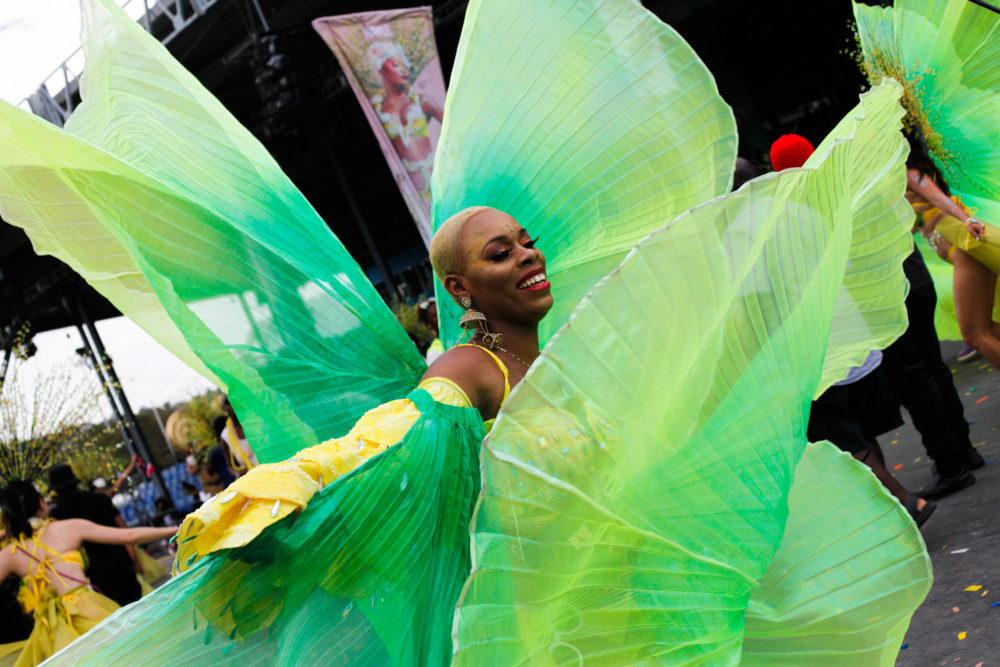
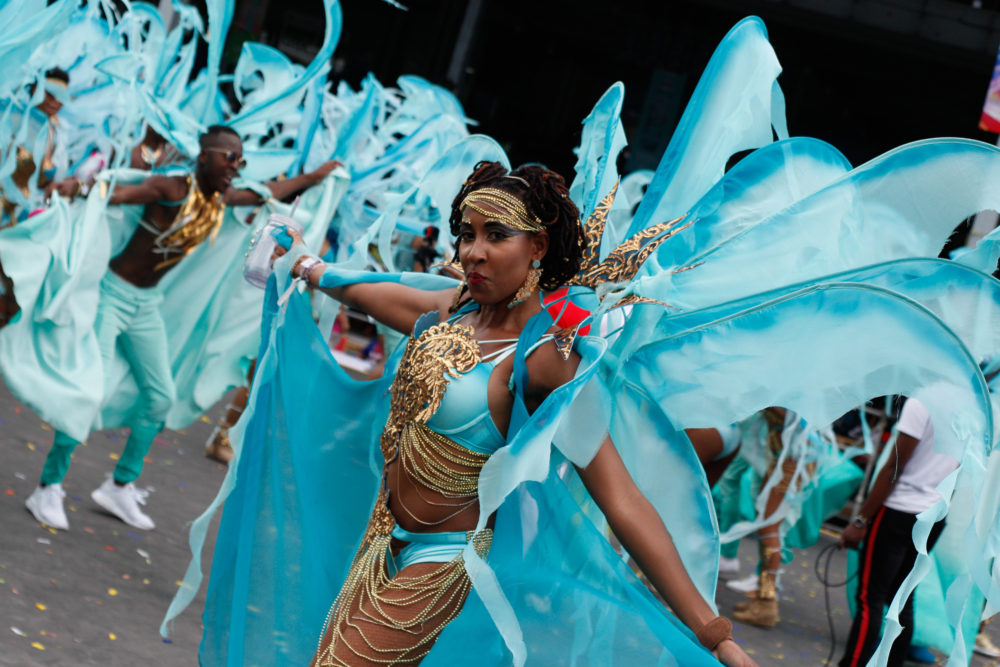
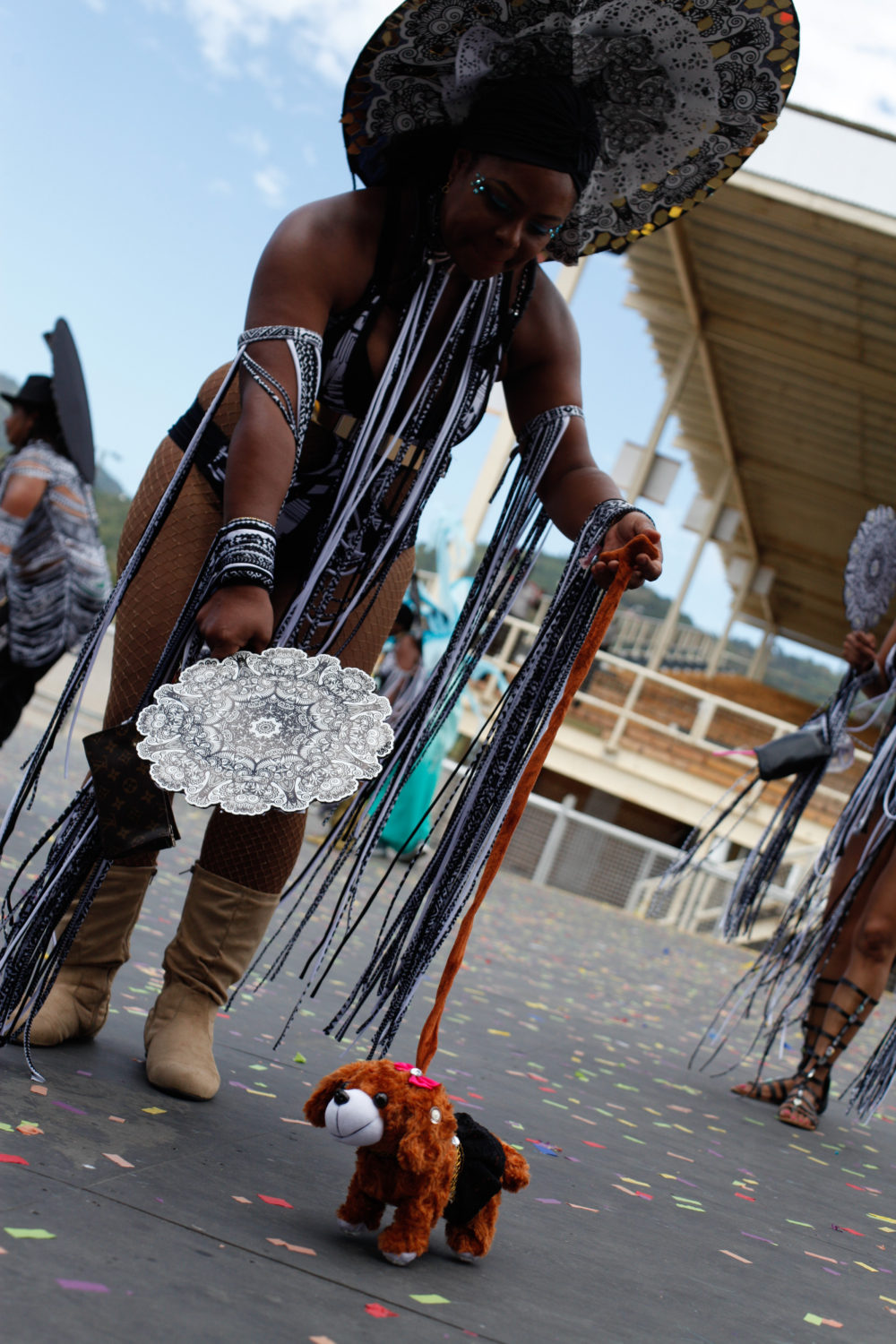
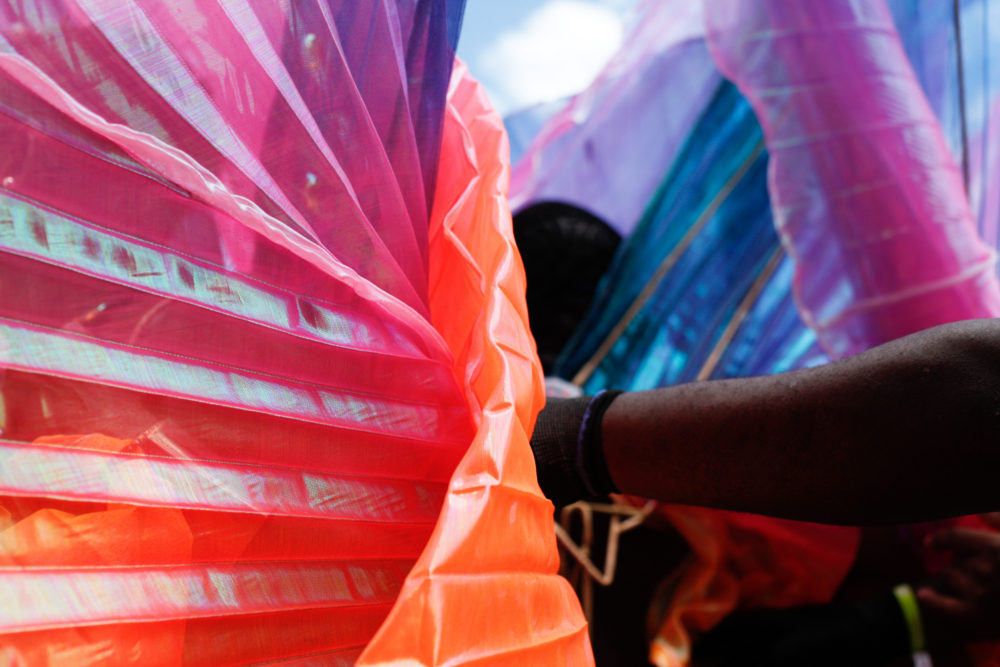
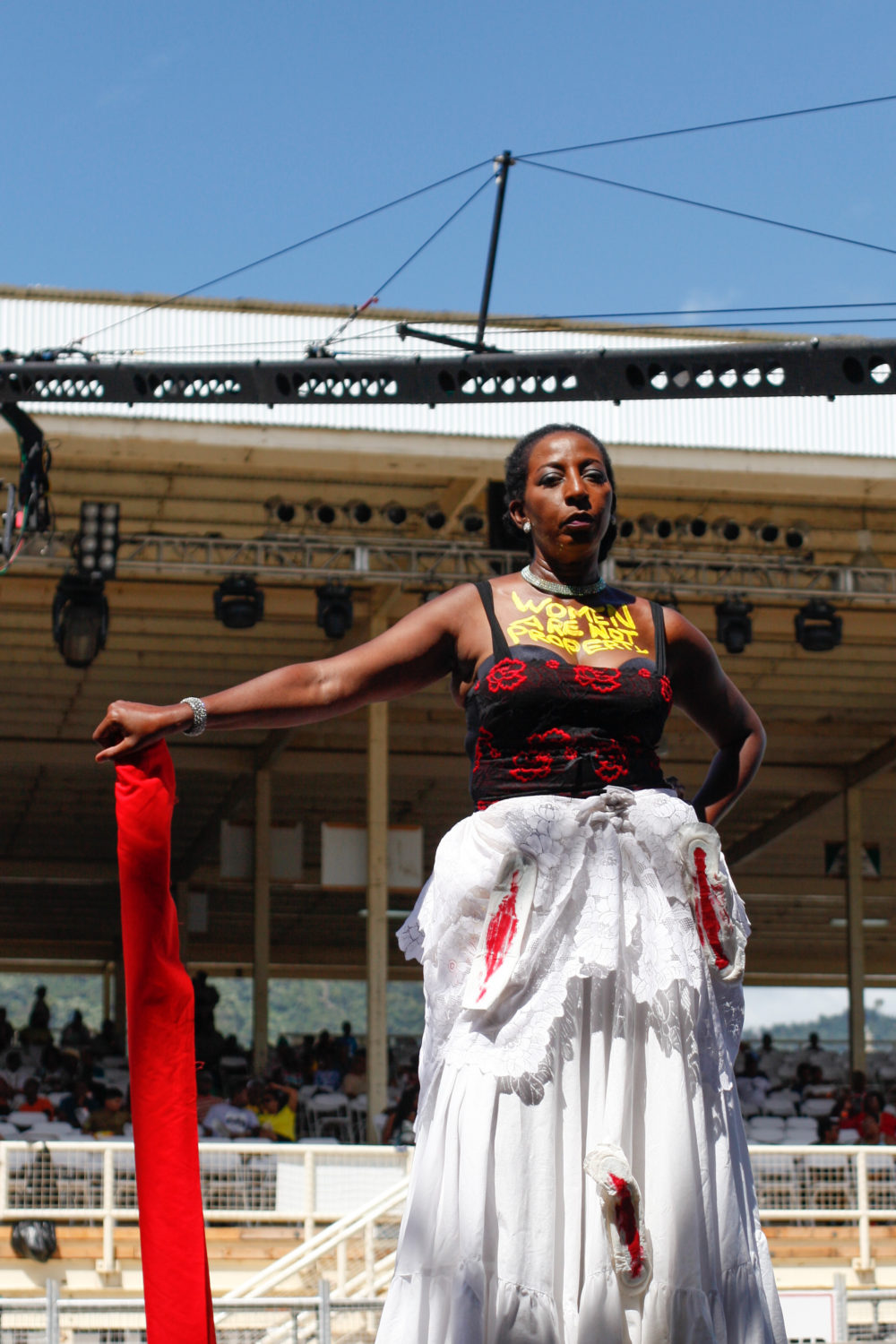
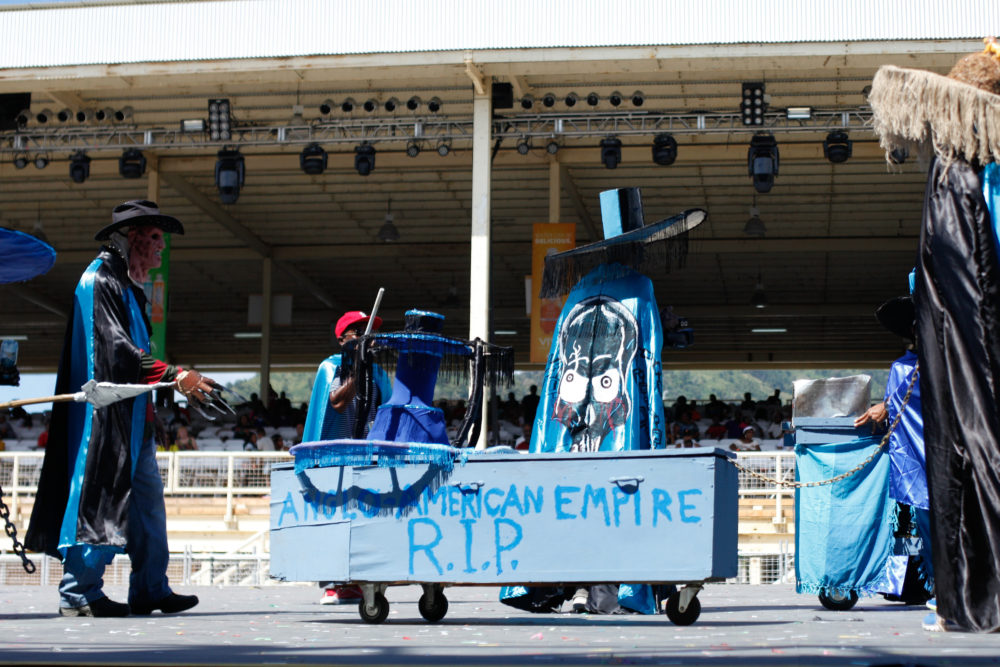
Some band leaders are bent on keeping the tradition alive. Peter Minshall is one. He is regarded by many as the greatest mas designer ever. He's been in the mas business for over 40 years and has helped design several Olympics opening ceremonies. Also, do you know those floppy, dancing, people-shaped air bags seen outside of car dealerships? He invented those too.
His mas costumes over the decades have been magnificent and stunningly creative. This year, he came out with a gorgeous band called the Eyes of God. It was simple but potent: white pants, white tees and sailor shirts and white sailor hats. The shirts and pants were hand painted with bold, black designs and printed with text that read:
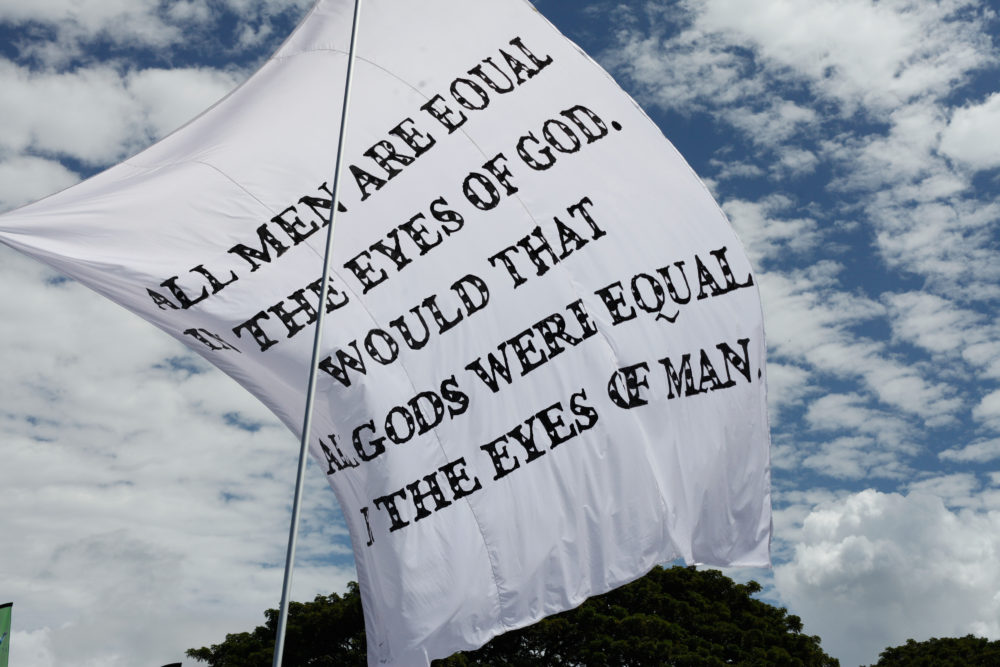
Minshall has been an outspoken critic of the trend in Trinidad's mas. The band was a thus a reminder, celebrating Trinidad's artistic traditions by bringing together steelpan (with accompaniment from Exodus Steel Orchestra), the traditional fancy sailor mas costume and the flag man/woman tradition. His giant black Pegasus had won King of Carnival and led the pack. It was a refreshing vision for those that worry mas these days prioritizes profits over personality.
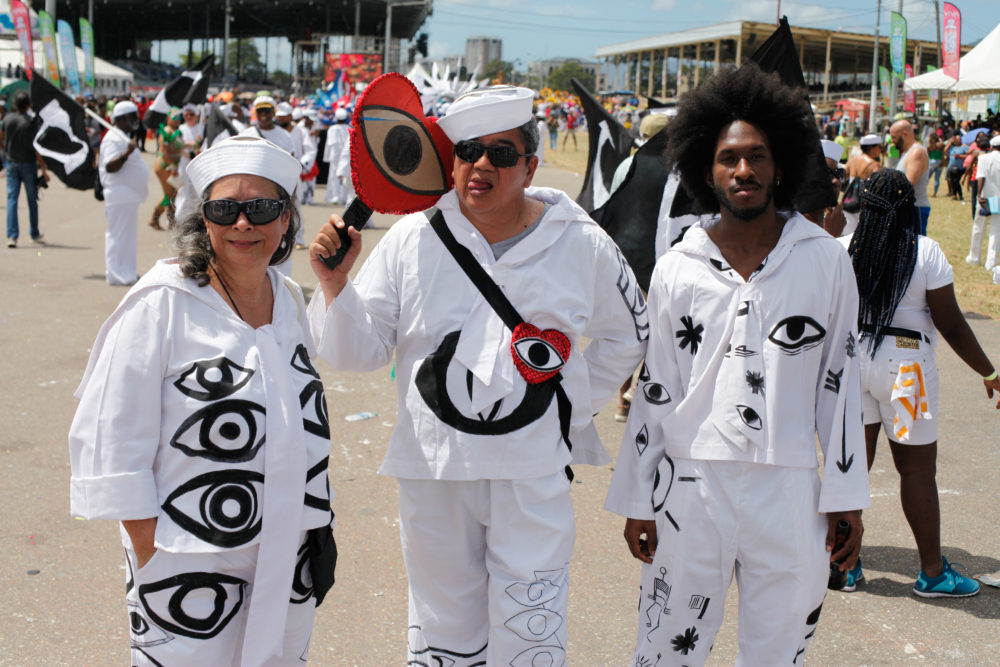
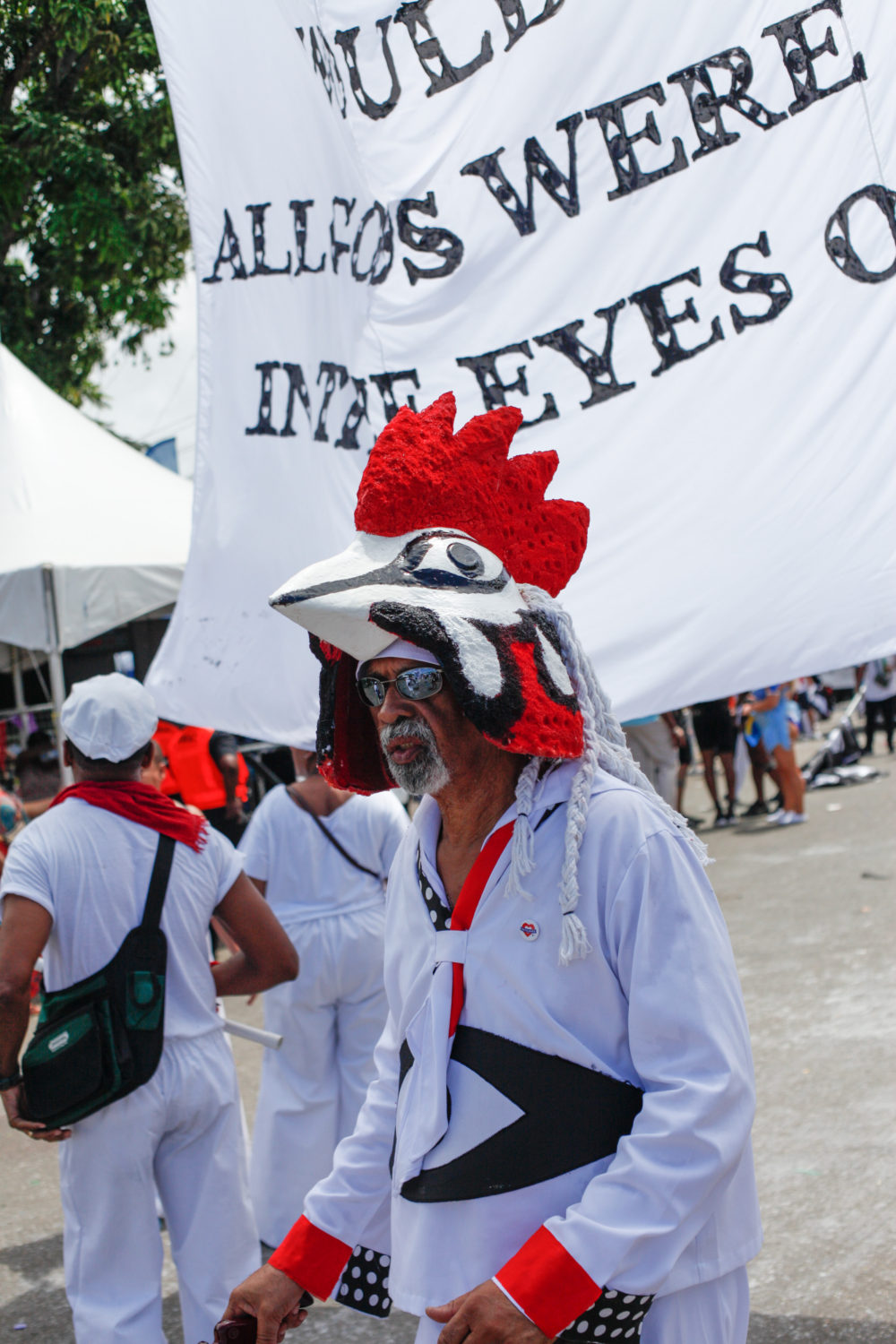
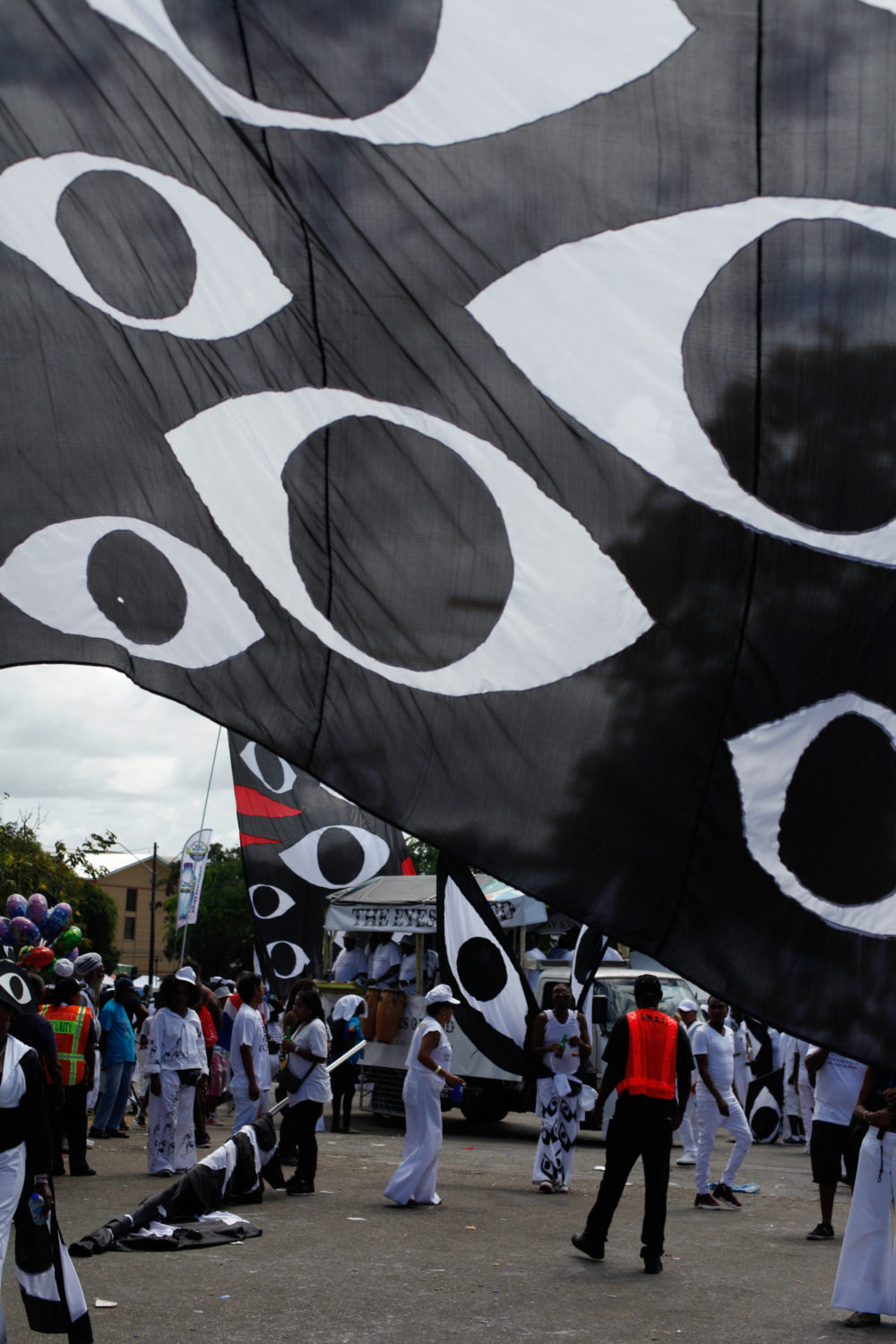
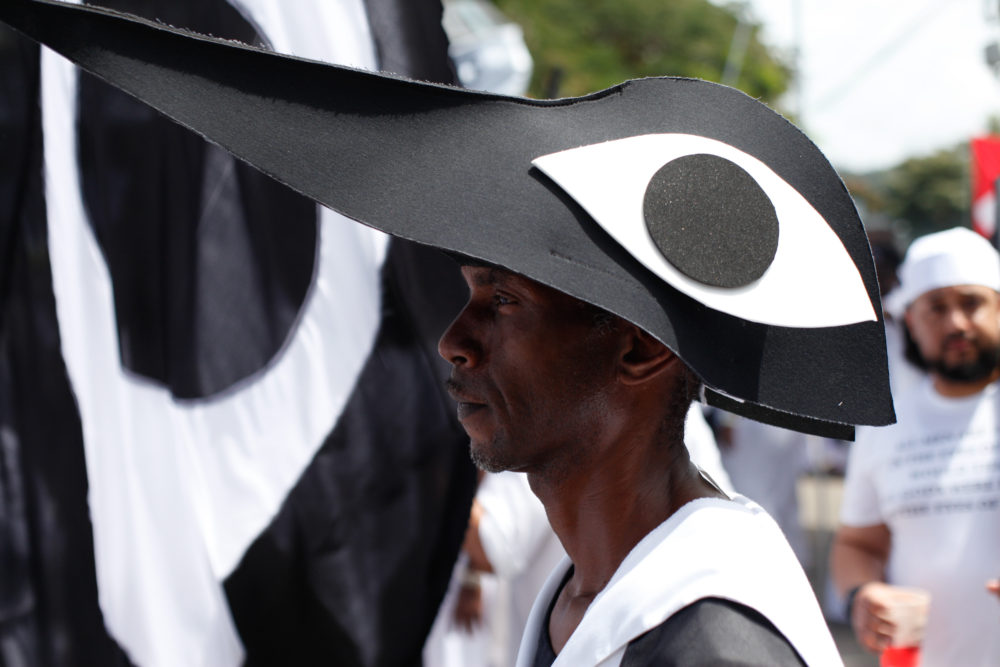
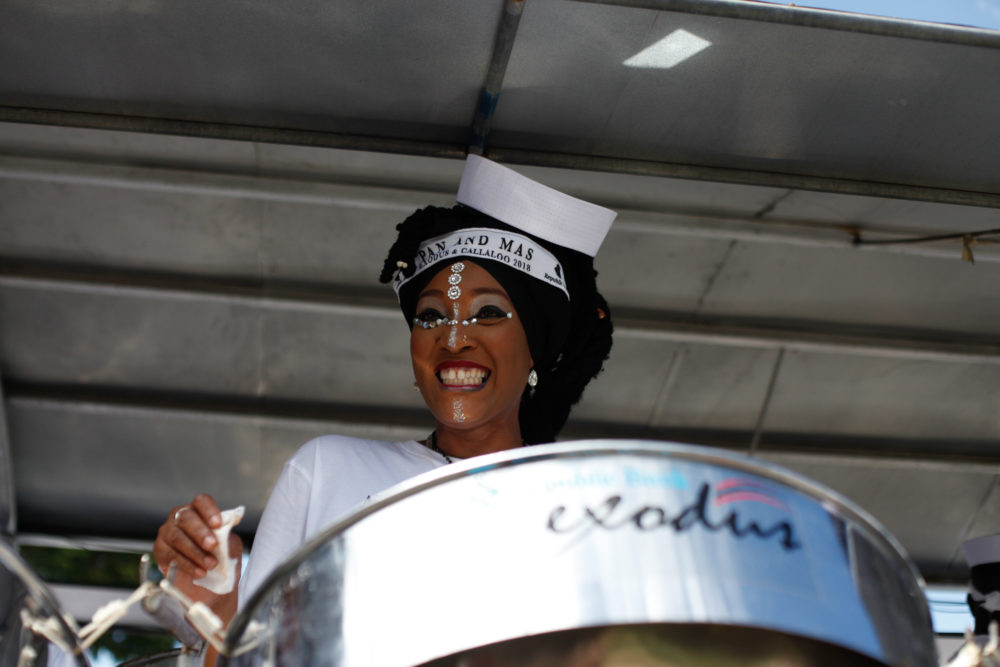
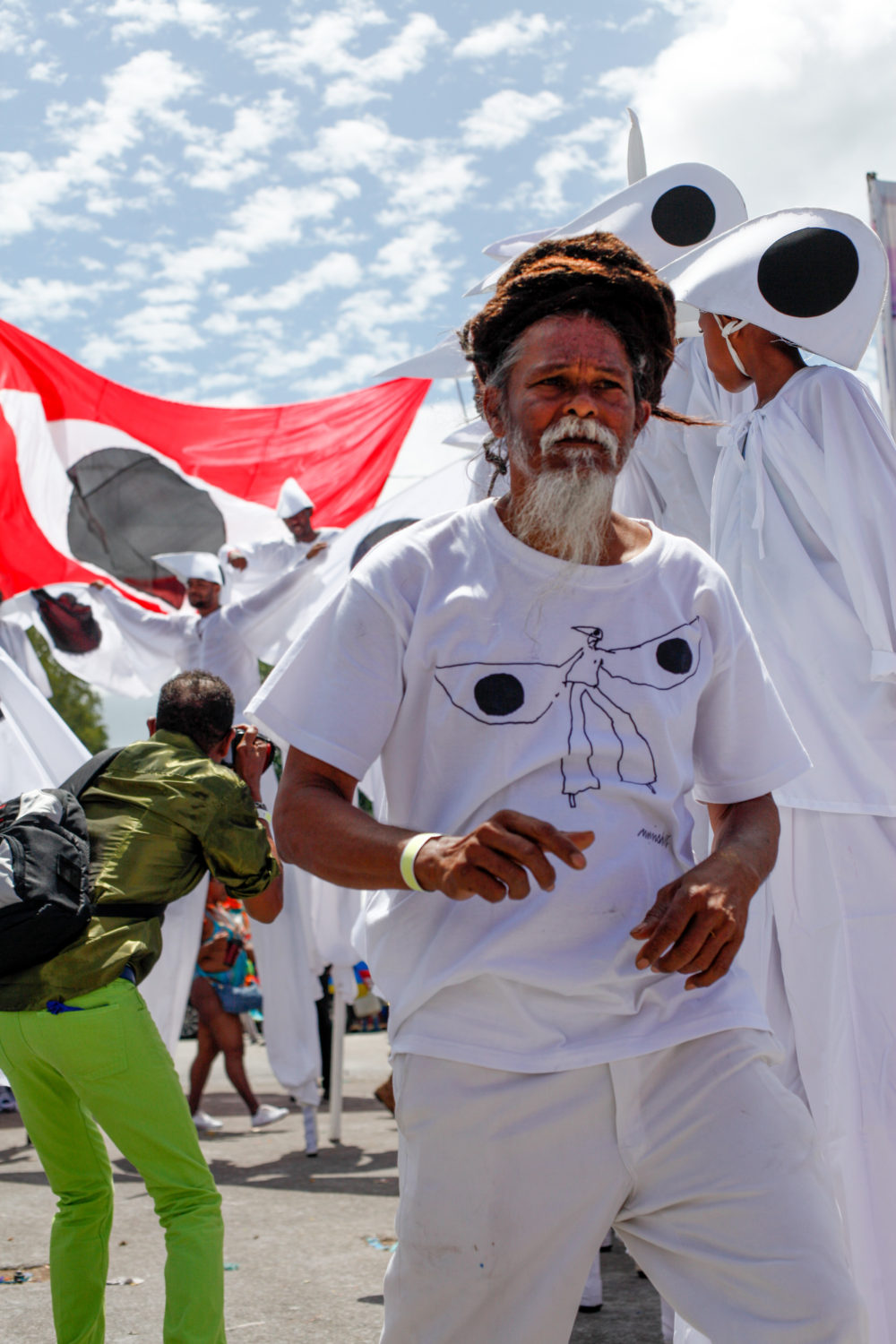
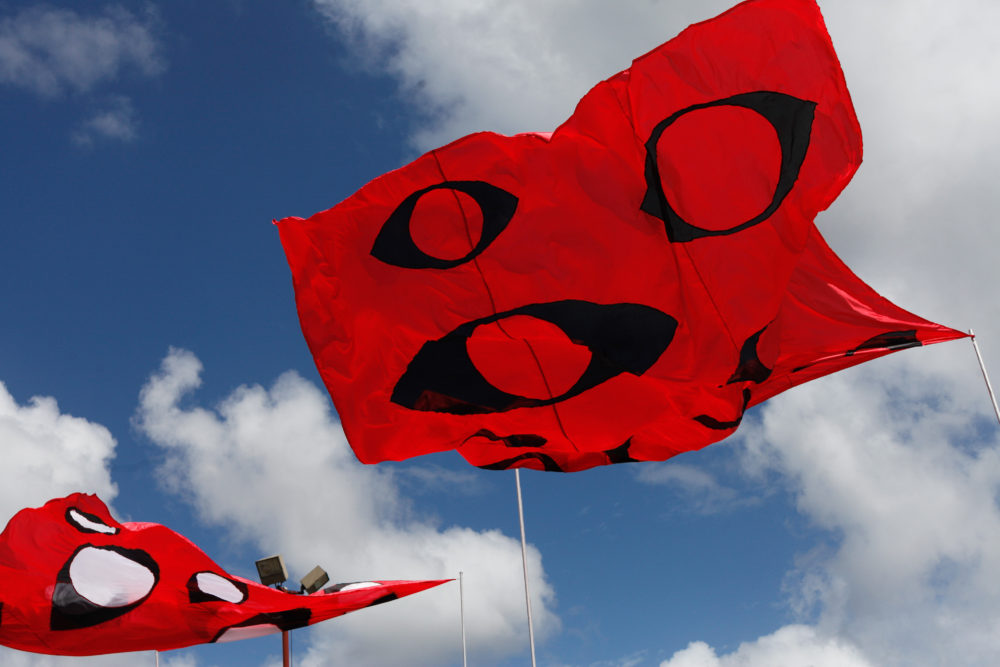
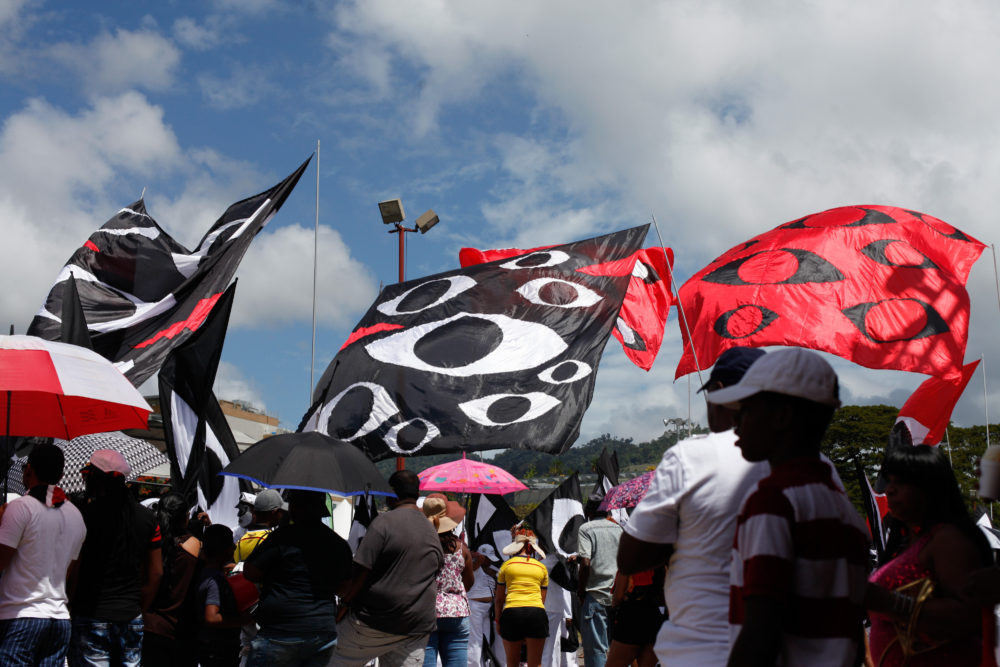
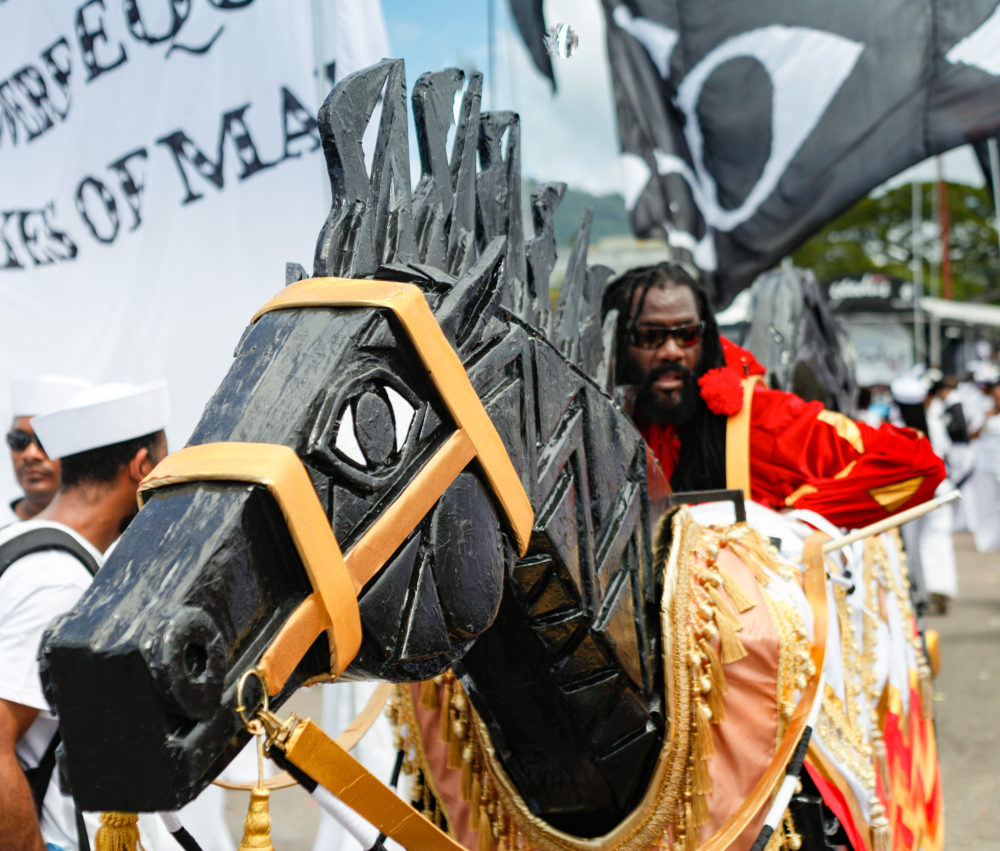
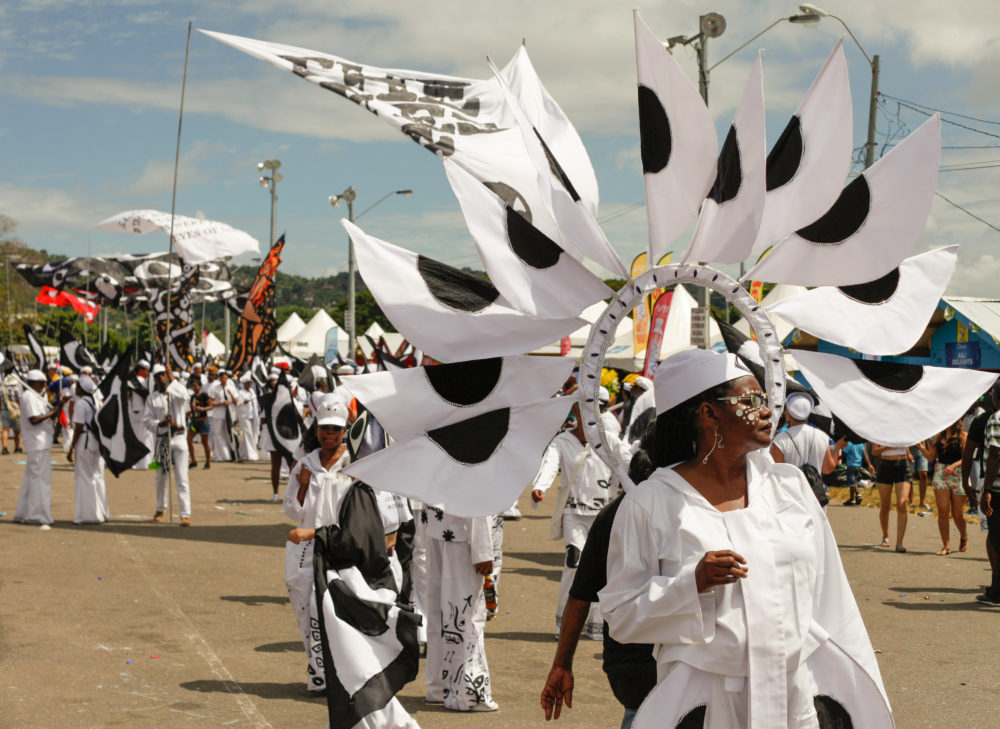
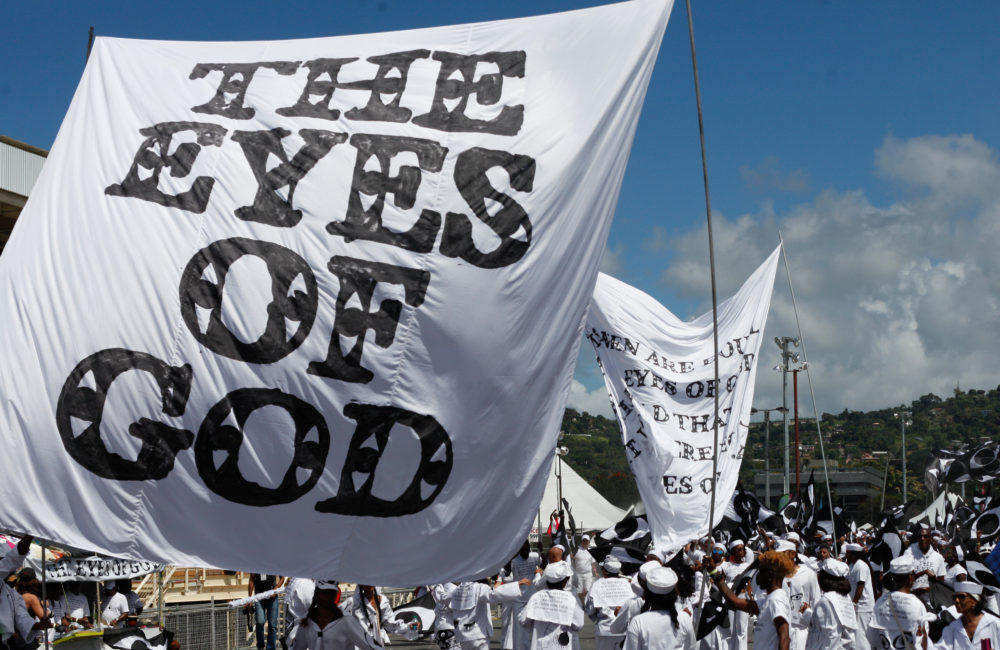
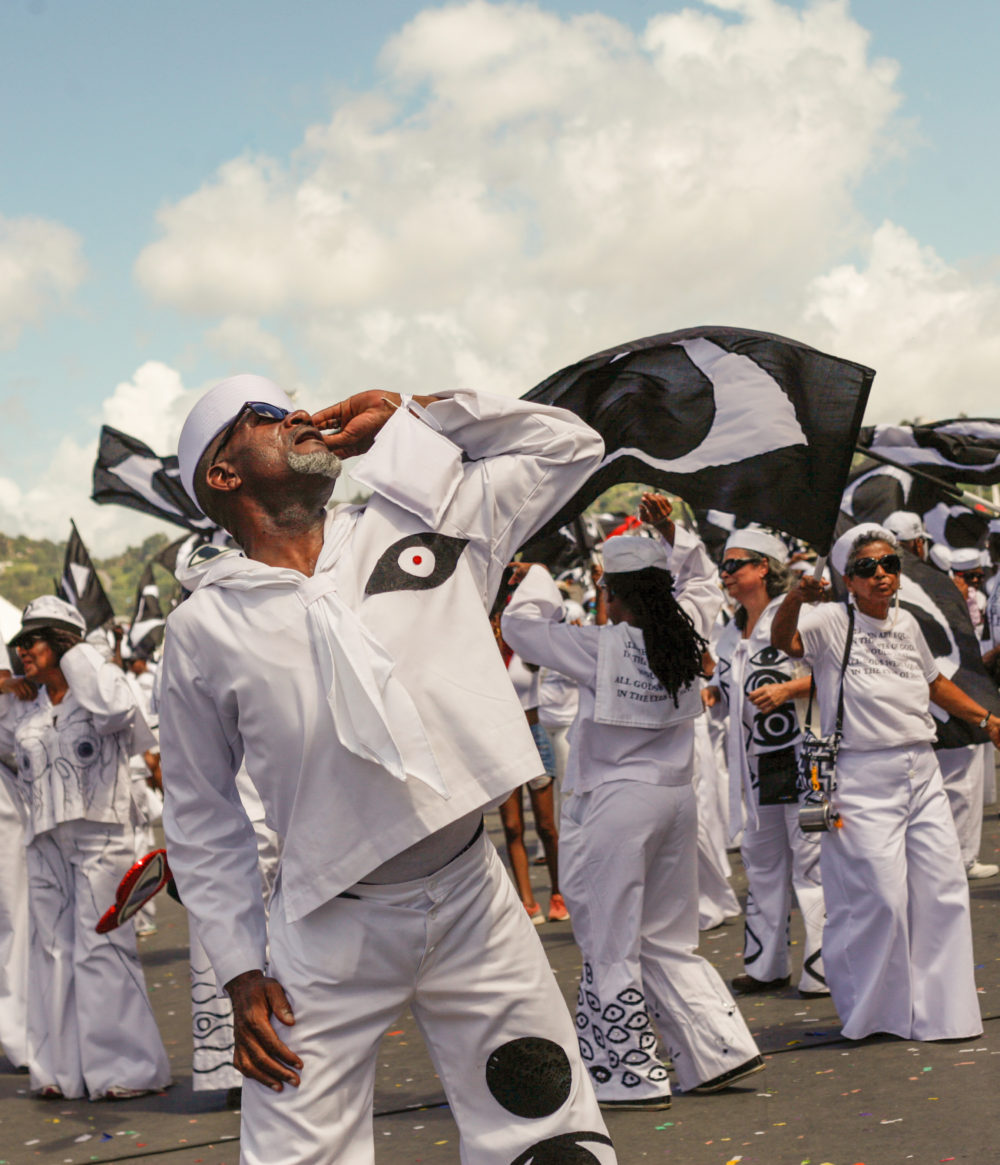
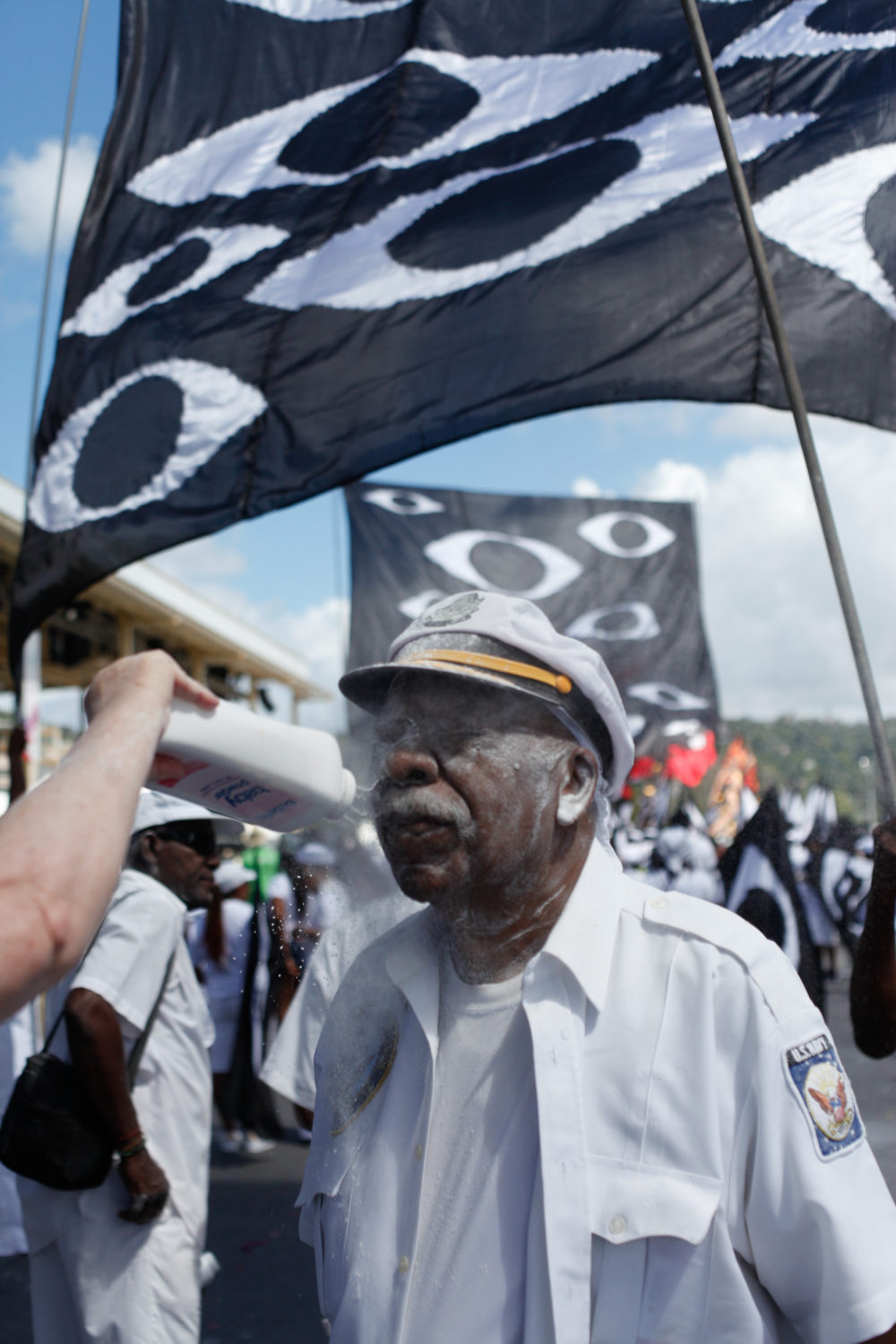
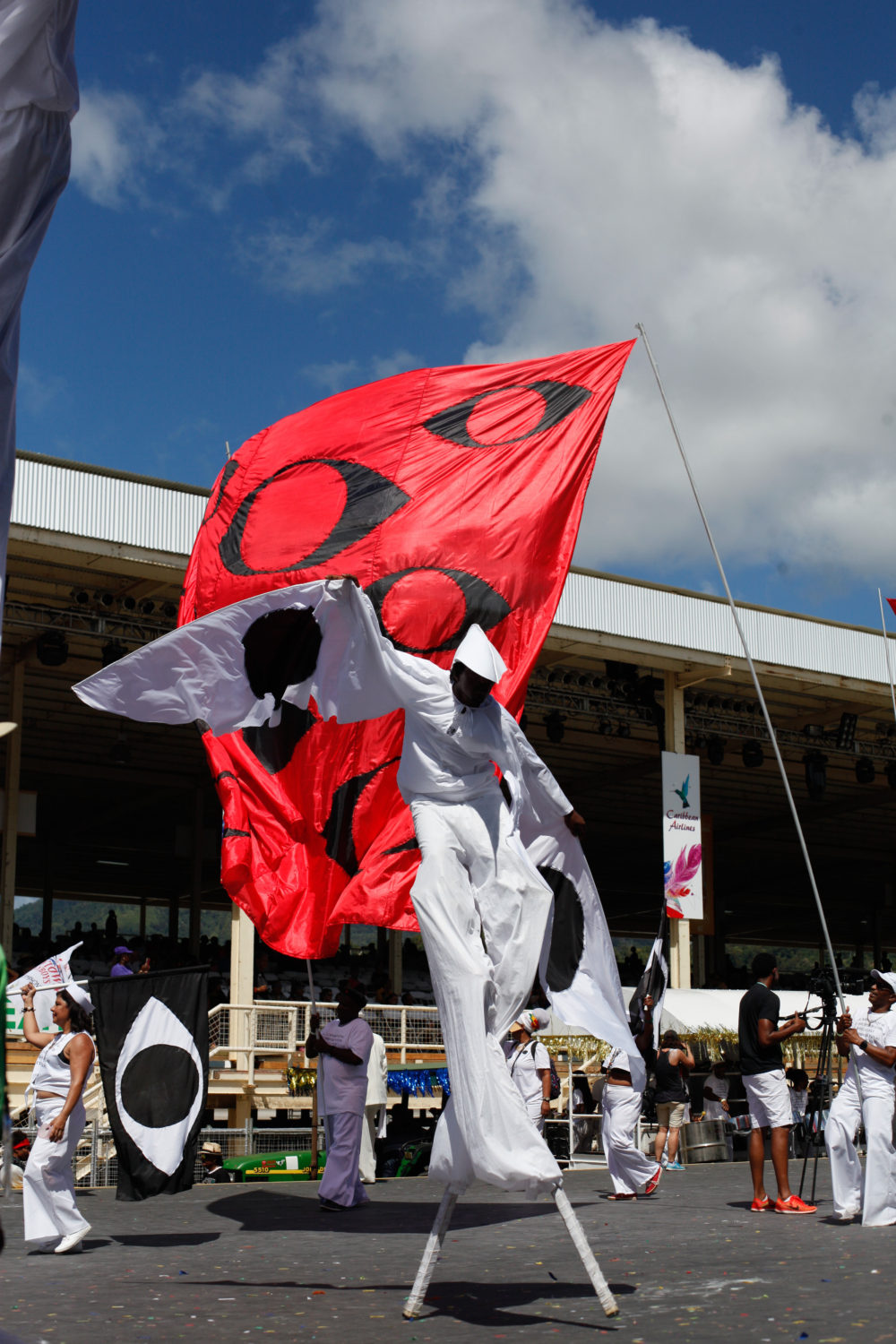
How will Trinidad's Carnival mas be played in years to come? We can't say for sure, but it's likely the debate between tradition and innovation will continue growing. As people eschew big money bands for homemade costumes and friends, Carnival could see a new direction emerge for its masquerade tradition. We'll keep you posted next year!
Related Audio Programs
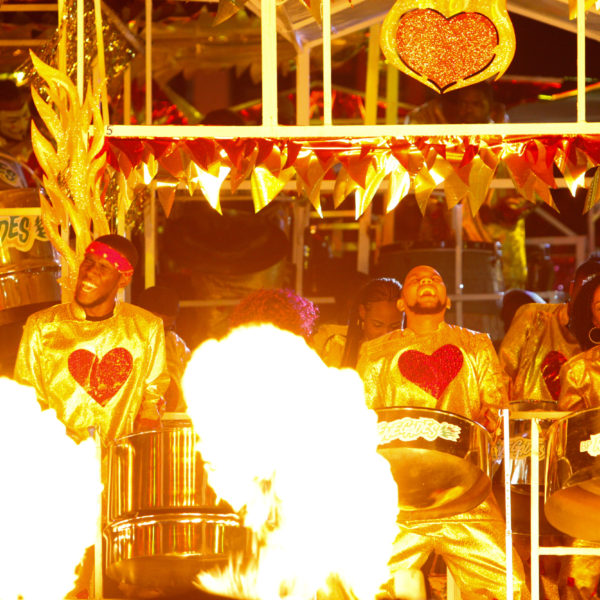
Related Articles
